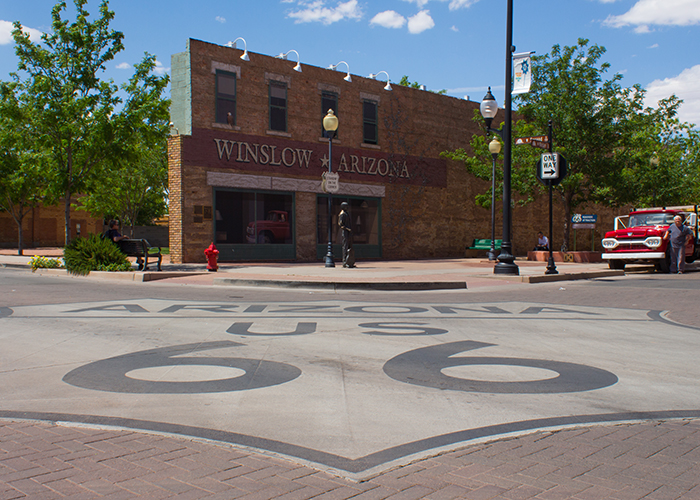 More 2016 Adventures |
Flagstaff, AZ → Petrified Forest NP → Flagstaff, AZ 283.0 mi (455.4 km) |
 Next Day |
I’m a-runnin’ down the road, everyone!
This morning at about 4:30, I pulled into Flagstaff, Arizona aboard Amtrak’s Southwest Chief! Even though we had to make an emergency stop in Corona because someone was having a seizure, it was otherwise a really nice overnight trip, much more comfortable than MEGABUS! By the time I got off the train, though, I had three and a half hours before I could rent a car, so I decided to hike up the nearest hill and visit Lowell Observatory!
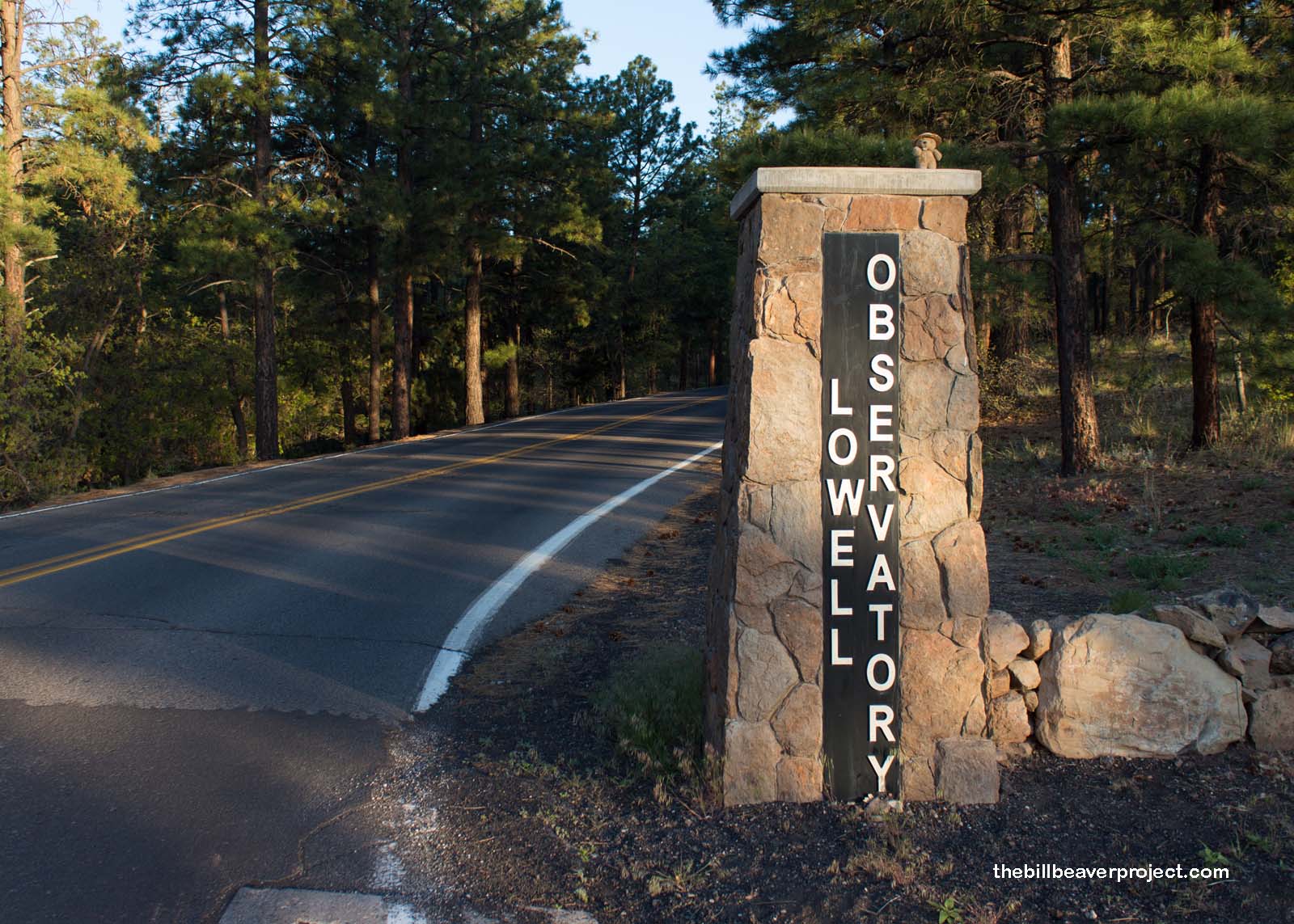 |
Percival Lowell had this observatory built in 1894 to study Mars, but so much more came out of this observatory than just information about the Red Planet! This is where scientists discovered Pluto and the steady expansion of our universe! This is where they mapped out the moon for the Apollo missions! It’s a pretty important observatory!
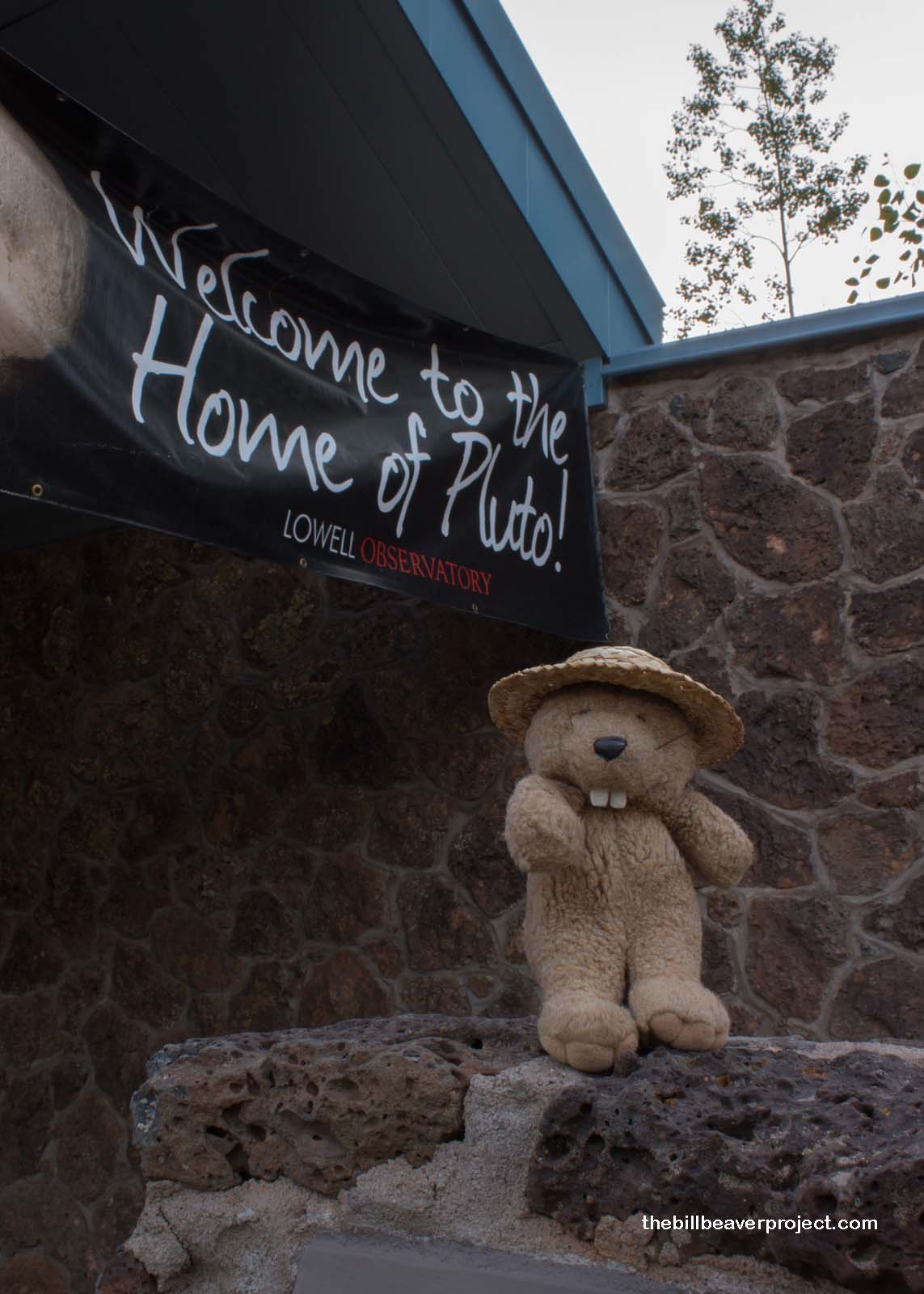 |
Most of those discoveries took place inside the Clark Dome, from which Mr. Lowell studied Mars to determine if there was intelligent life up there! His observations and theories inspired the work of H.G Wells (The War of the Worlds) and Edgar Rice Burroughs (John Carter of Mars)!
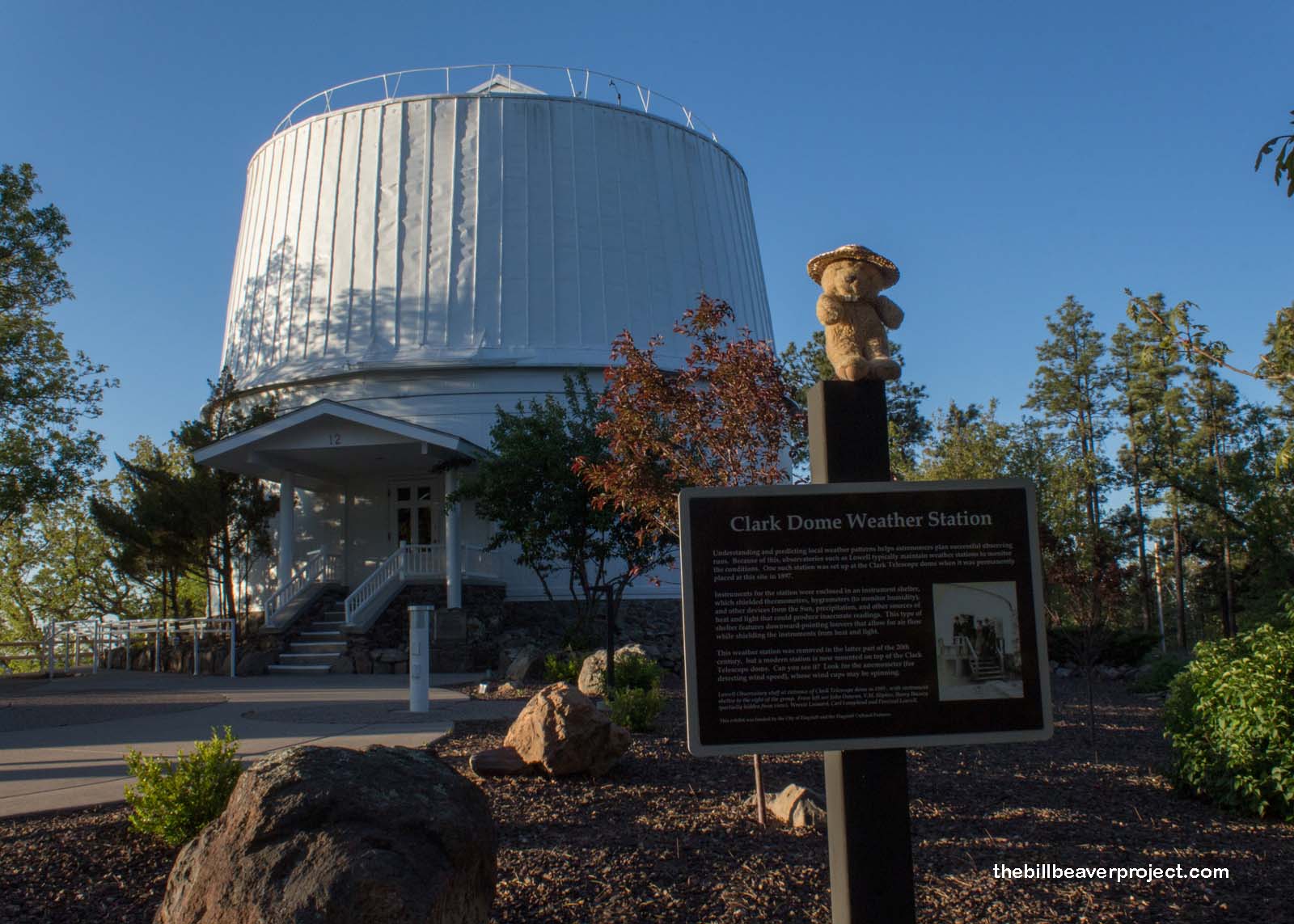 |
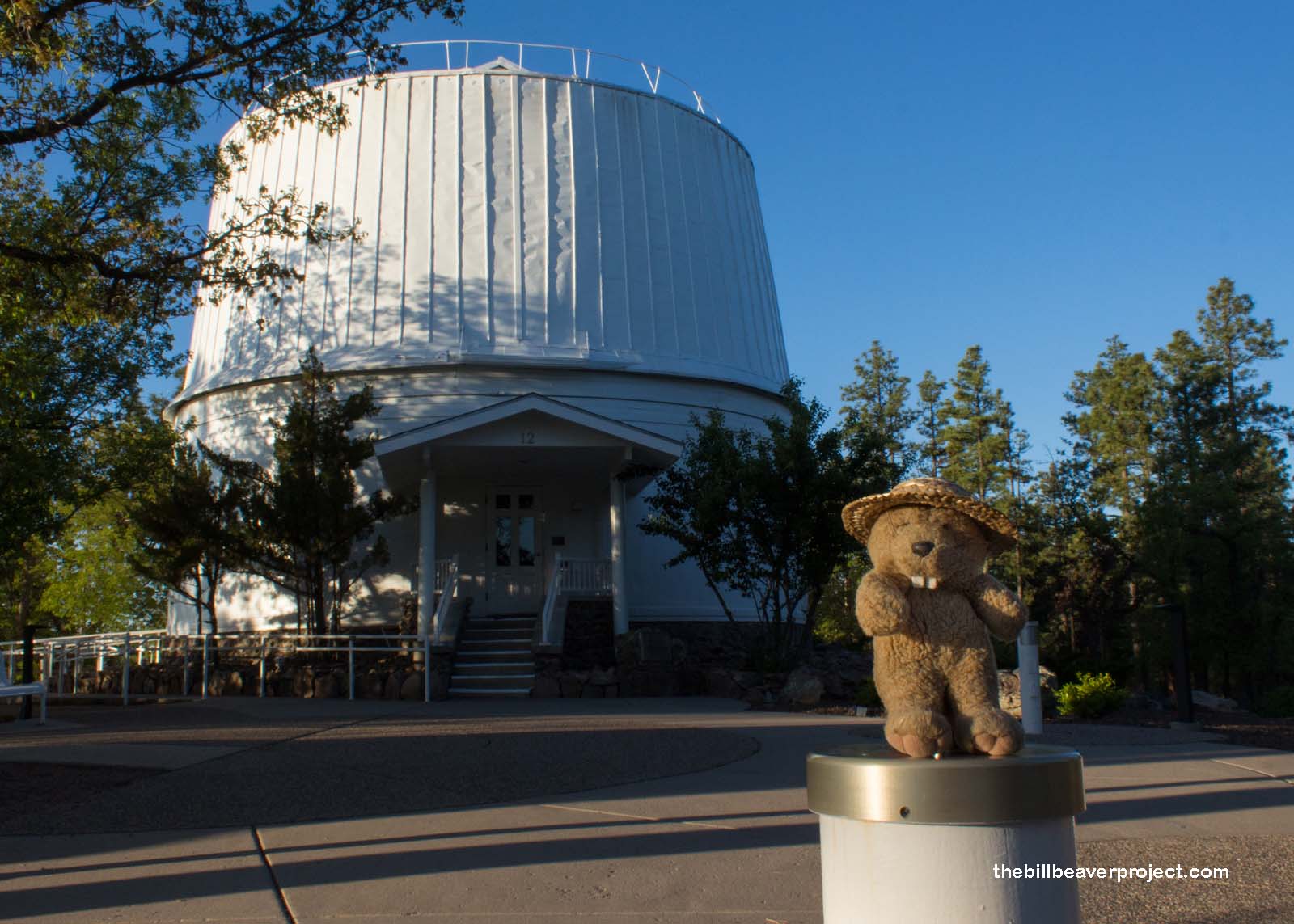 |
I moseyed back into Flagstaff and caught an Uber to the Flagstaff-Pulliam Airport, which was both teeny and tiny! I got my mini car and hit the road for today’s first major stop: Walnut Canyon National Monument!
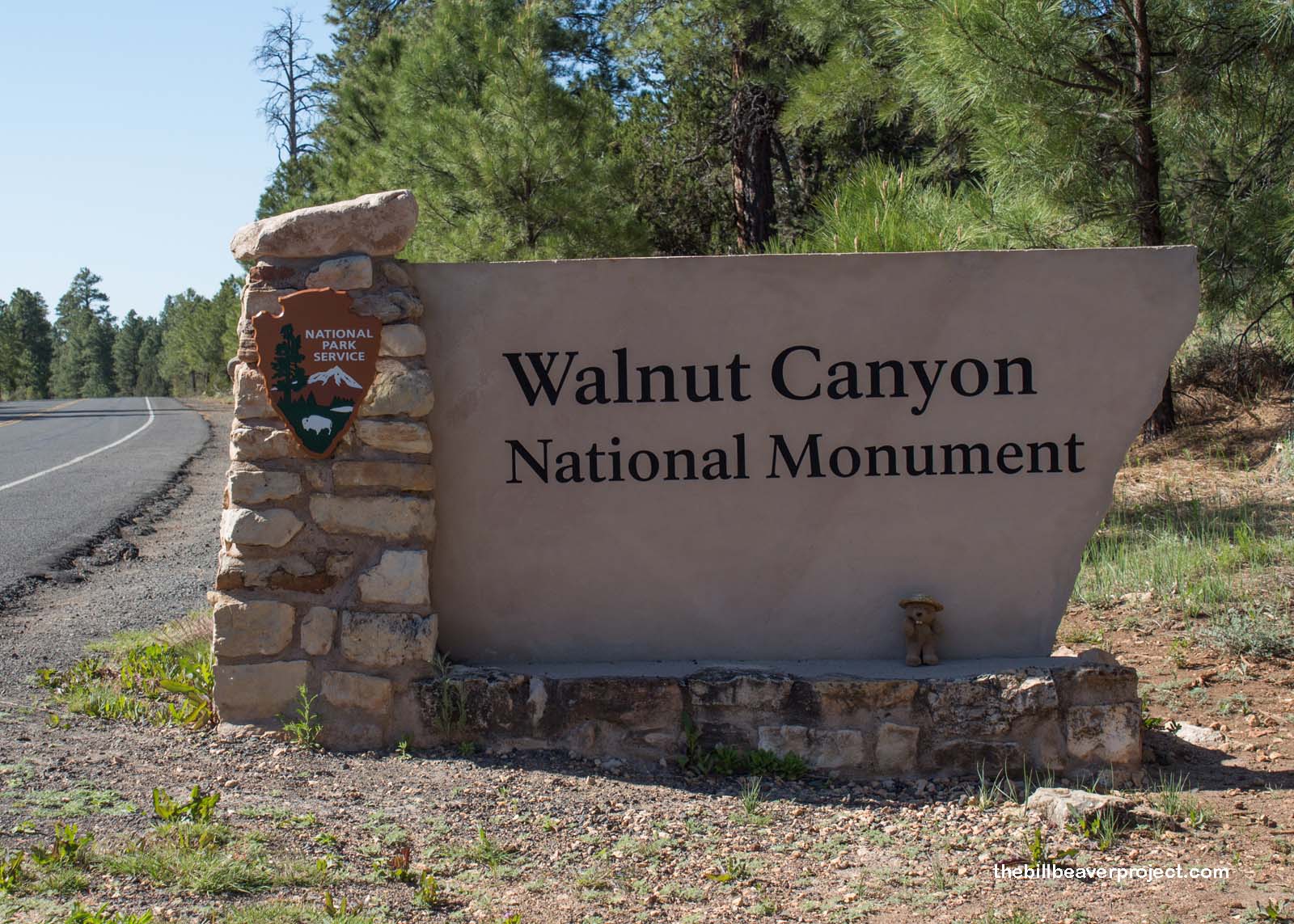 |
Named for the Arizona walnut trees that line the creek below, Walnut Canyon is a fascinating place where desert meets forest! On the southern-facing slopes, you’ll find cacti, yucca, and desert animals, while on the northern-facing slopes, you’ll find Douglas firs, ponderosa pines, and forest animals! In the middle of them all sits the Island, a rocky hill that sticks up from the canyon floor (not really a true island), with a whole neighborhood of ancient cliff dwellings still clinging to the sides after countless generations!
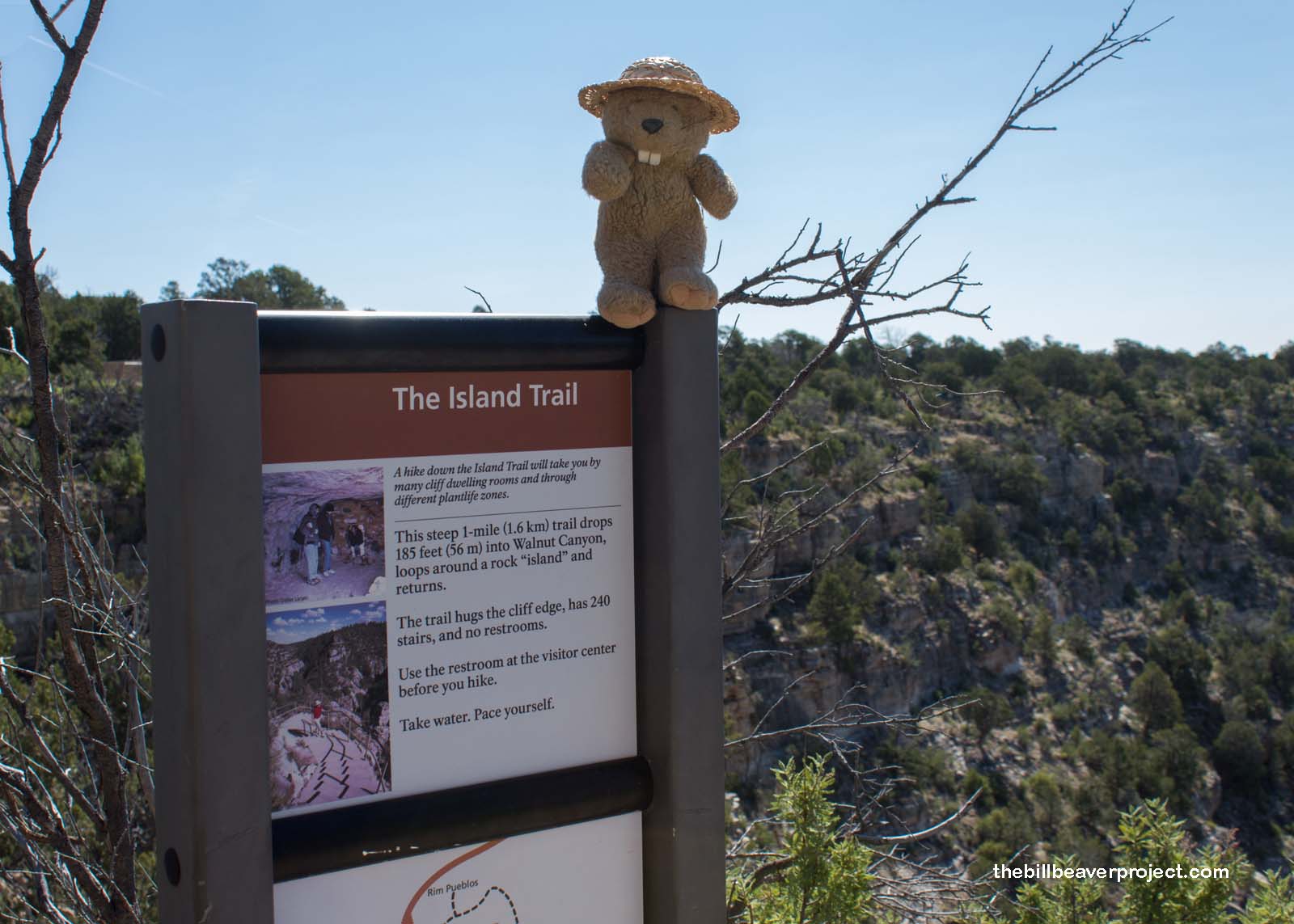 |
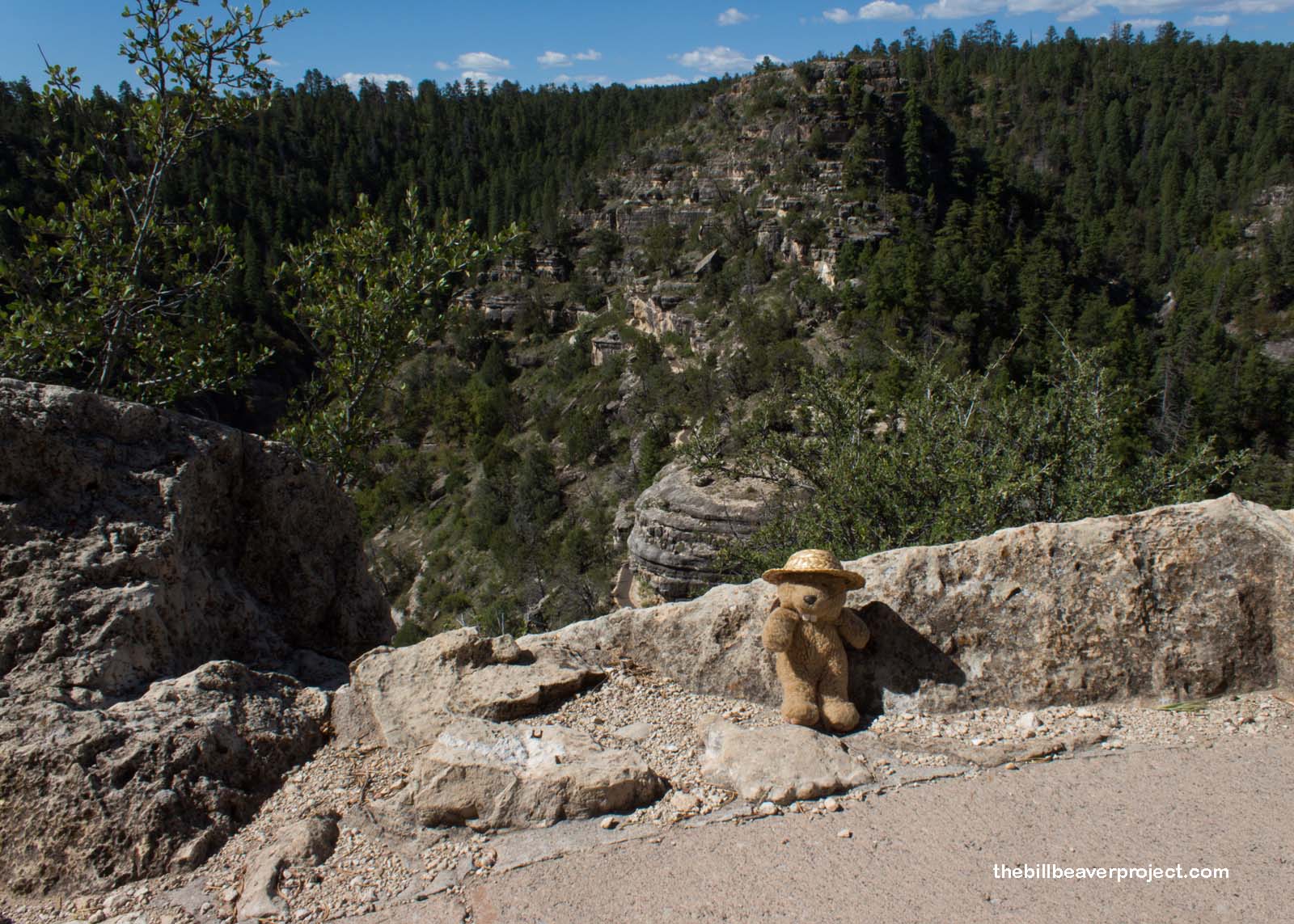 |
To get there, I had to take the Island Trail, freshly opened after being closed since May 2 (lucky me!) and originally not scheduled to reopen until next Tuesday (extra-lucky me!), but not so much a trail as a staircase of 240 steps (less lucky me!). Well, to get to amazing places, sometimes you just have to take steps!
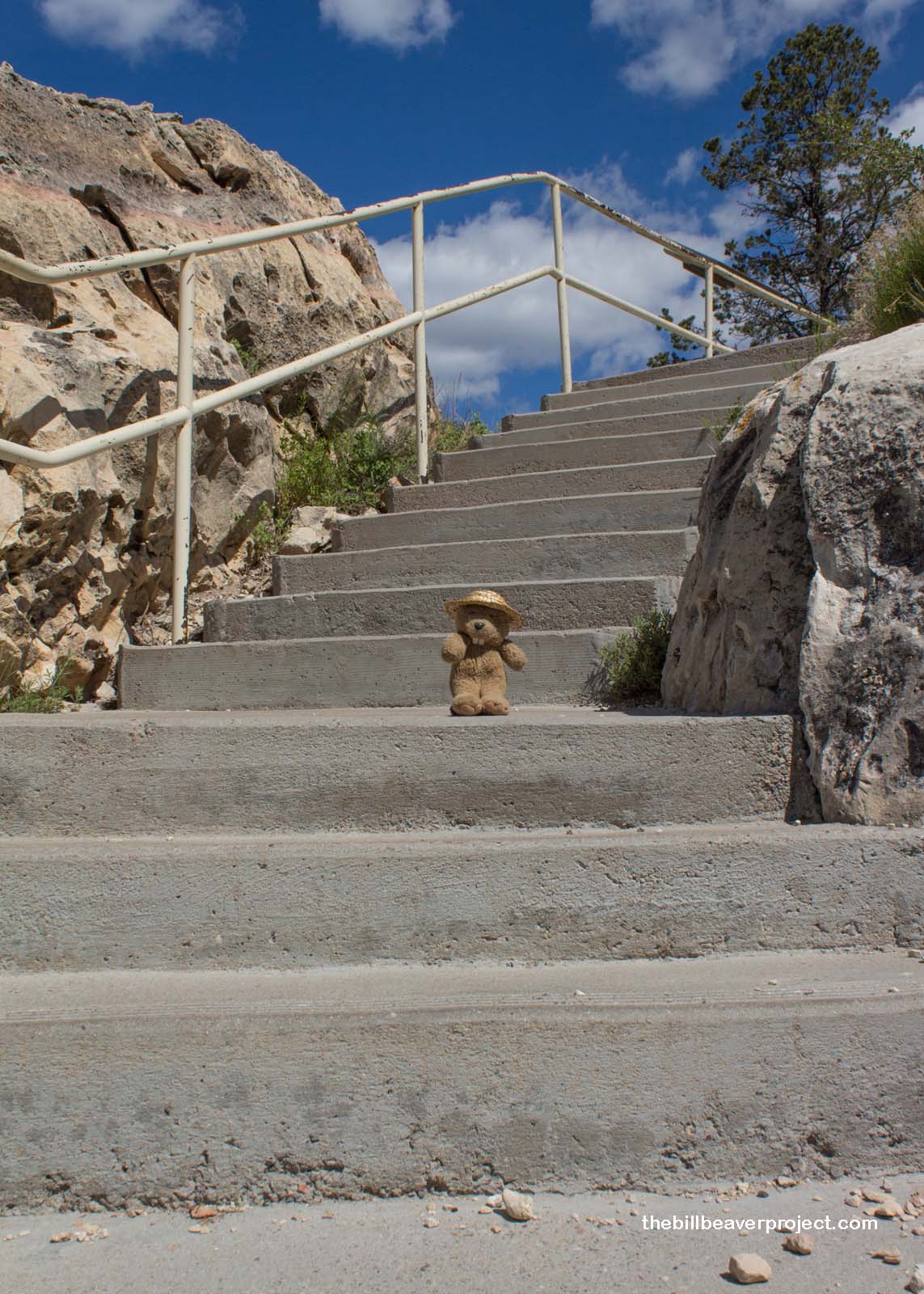 |
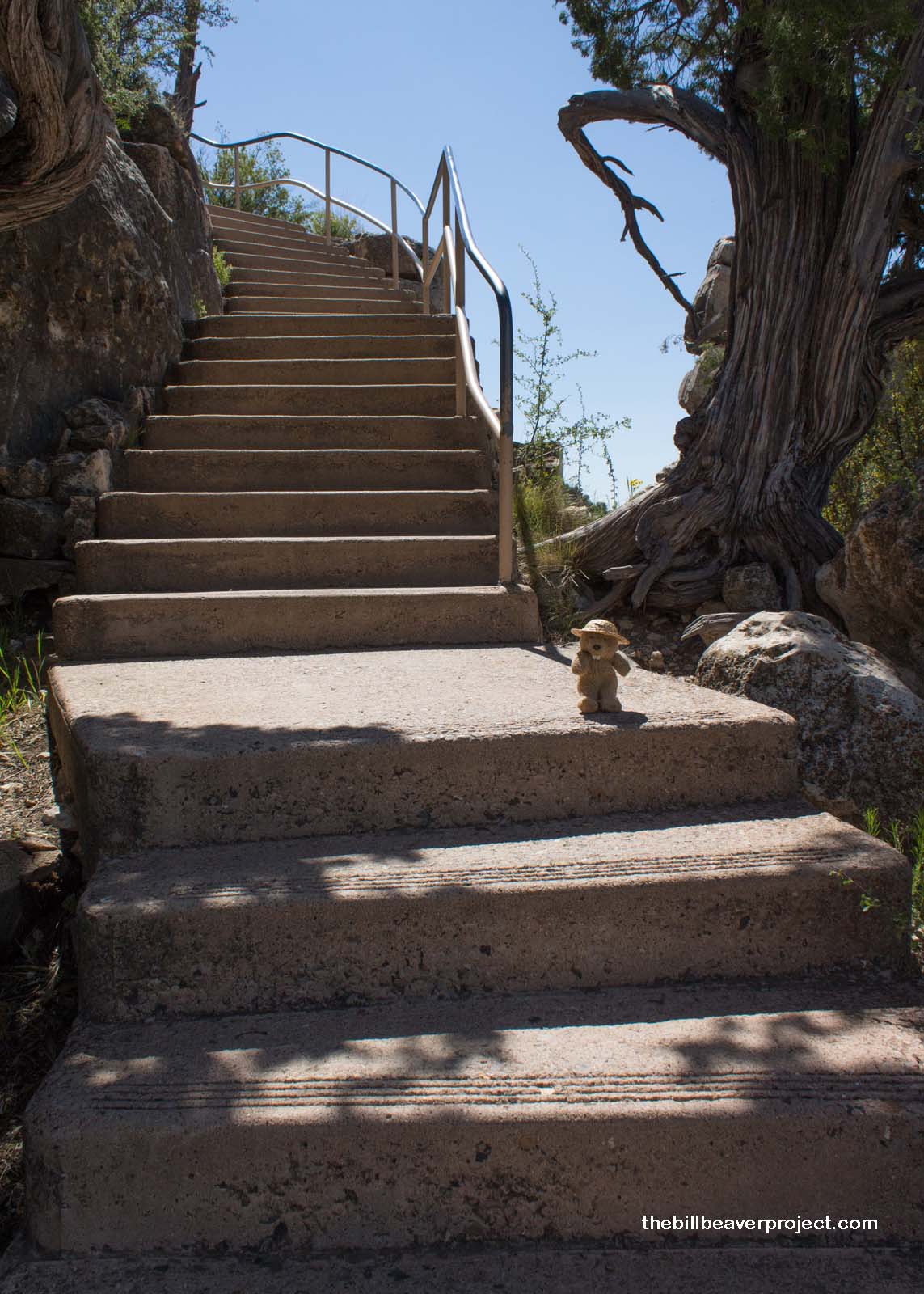 |
At last, I reached the bottom and started my loop around the Island! I was well ahead of the crowds, which was great, because there wouldn’t have been much maneuver room on the path here. Then again, I can’t imagine massive crowds making it down those stairs!
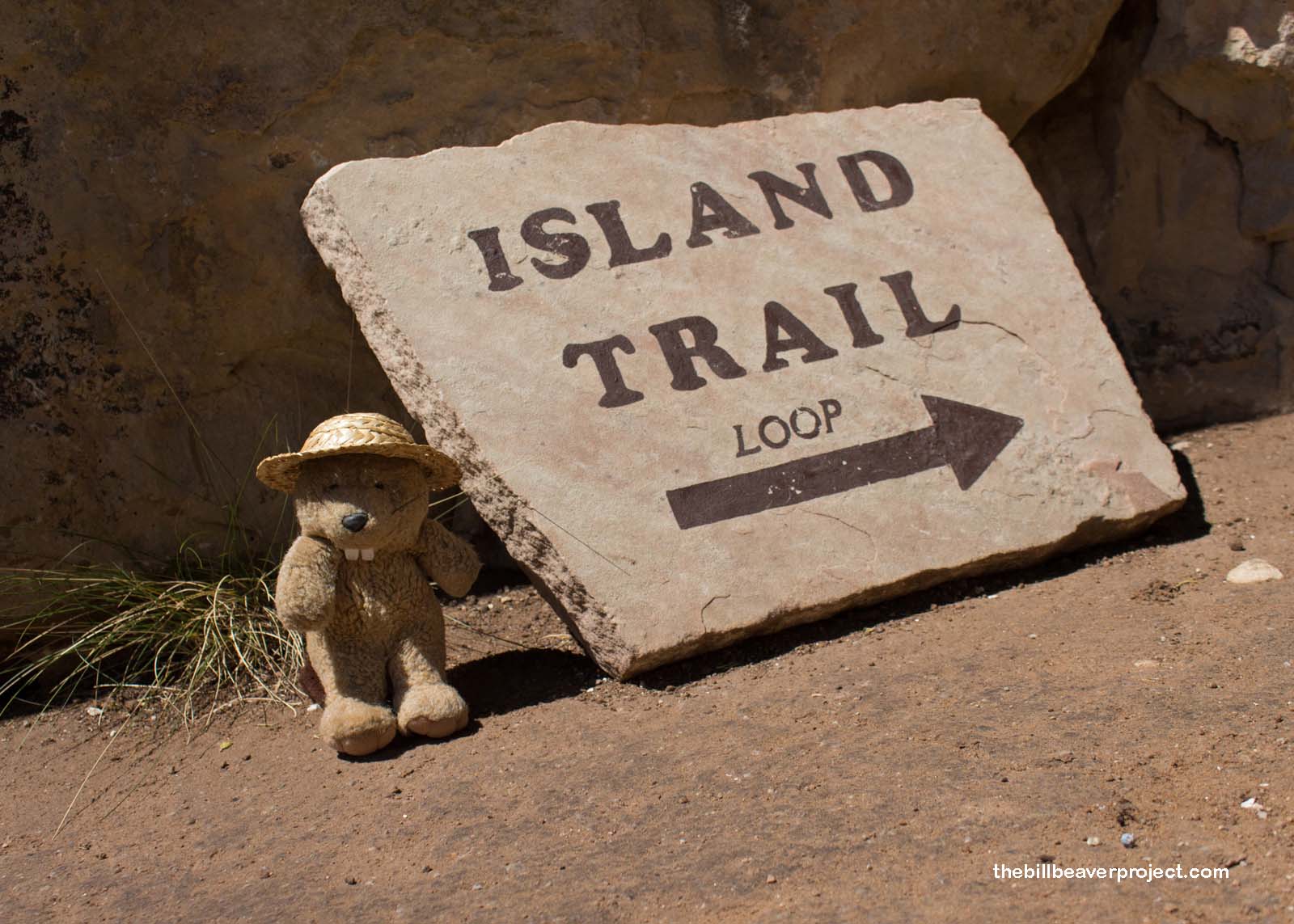 |
Just around the corner, I encountered the first homes of the Sinagua people, who resided here from about 600 until 1400 AD! They raised their crops high on the cliff walls, which gave them shade in summer, shelter in the rain, and a great vantage point in case there was trouble heading their way! Luckily for them, they left here long before the first European explorers passed through!
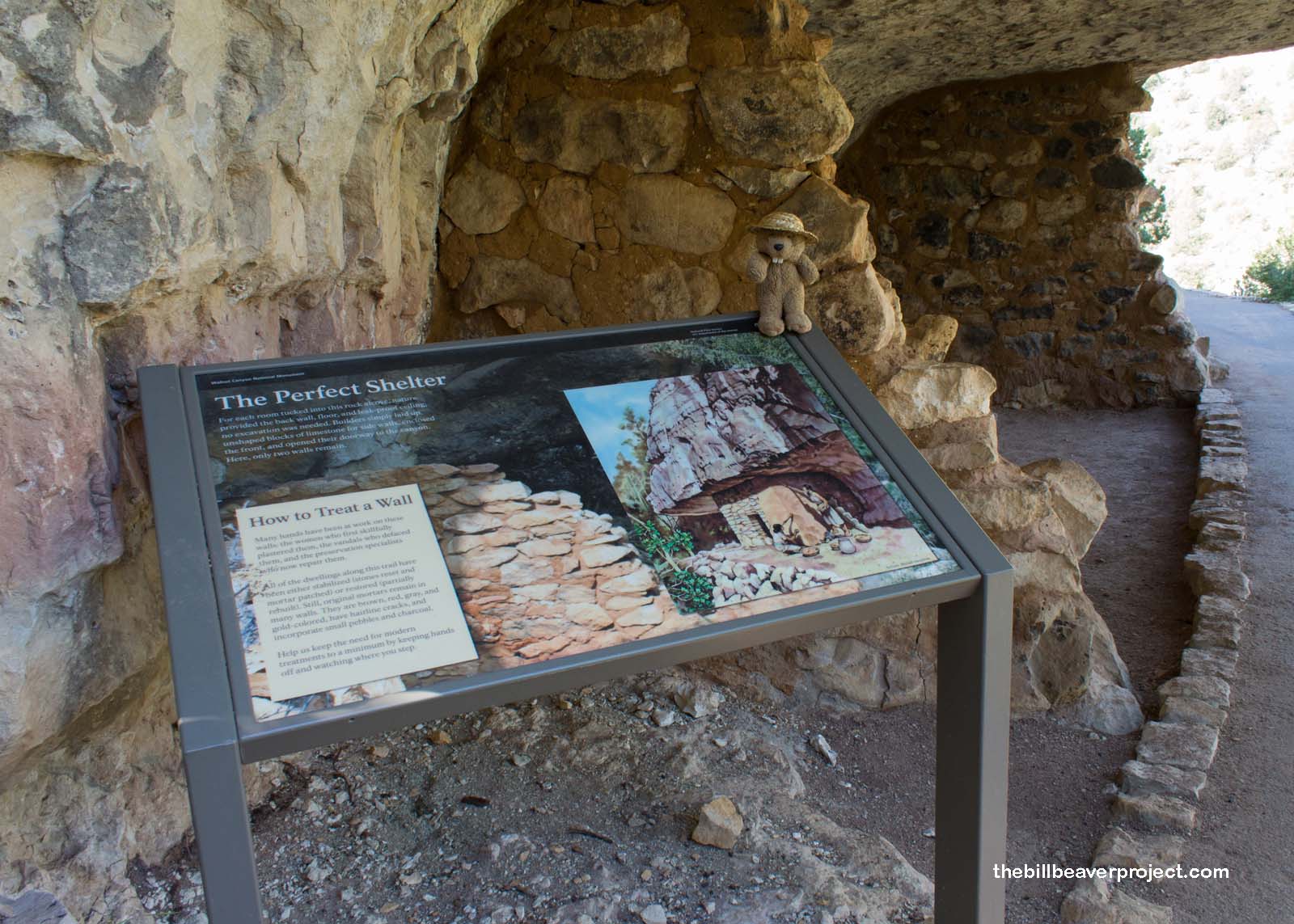 |
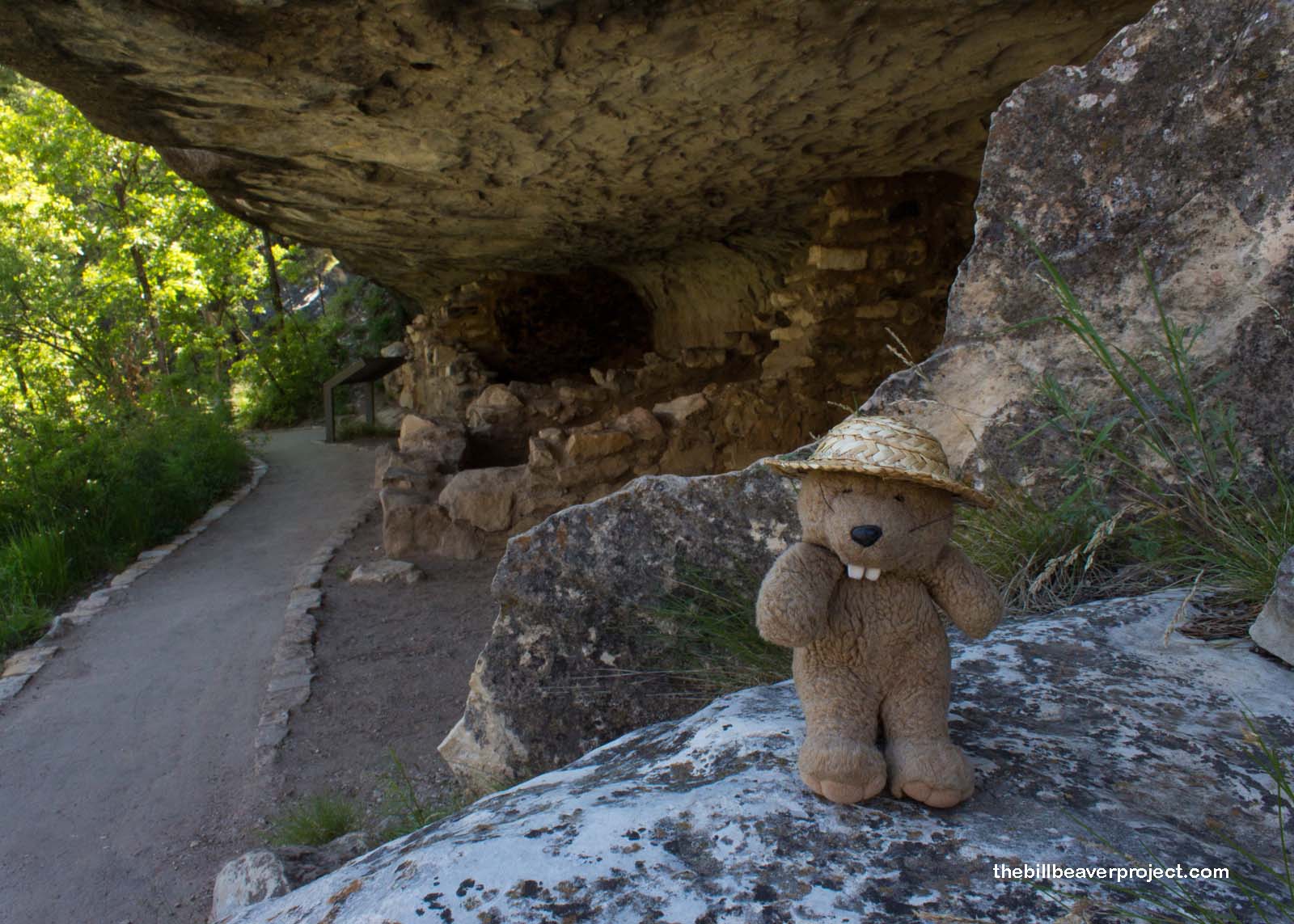 |
These are just the closest ruins to see. I could see rows of ruins lining the cliffs all around the Island with natural pathways running along the cliff faces that the Sinagua could have used to visit their cliffside neighbors! It would have been a remarkable place to live, though it’s still a mystery what drove the Sinagua away. Perhaps a drought? A famine? No one is totally sure!
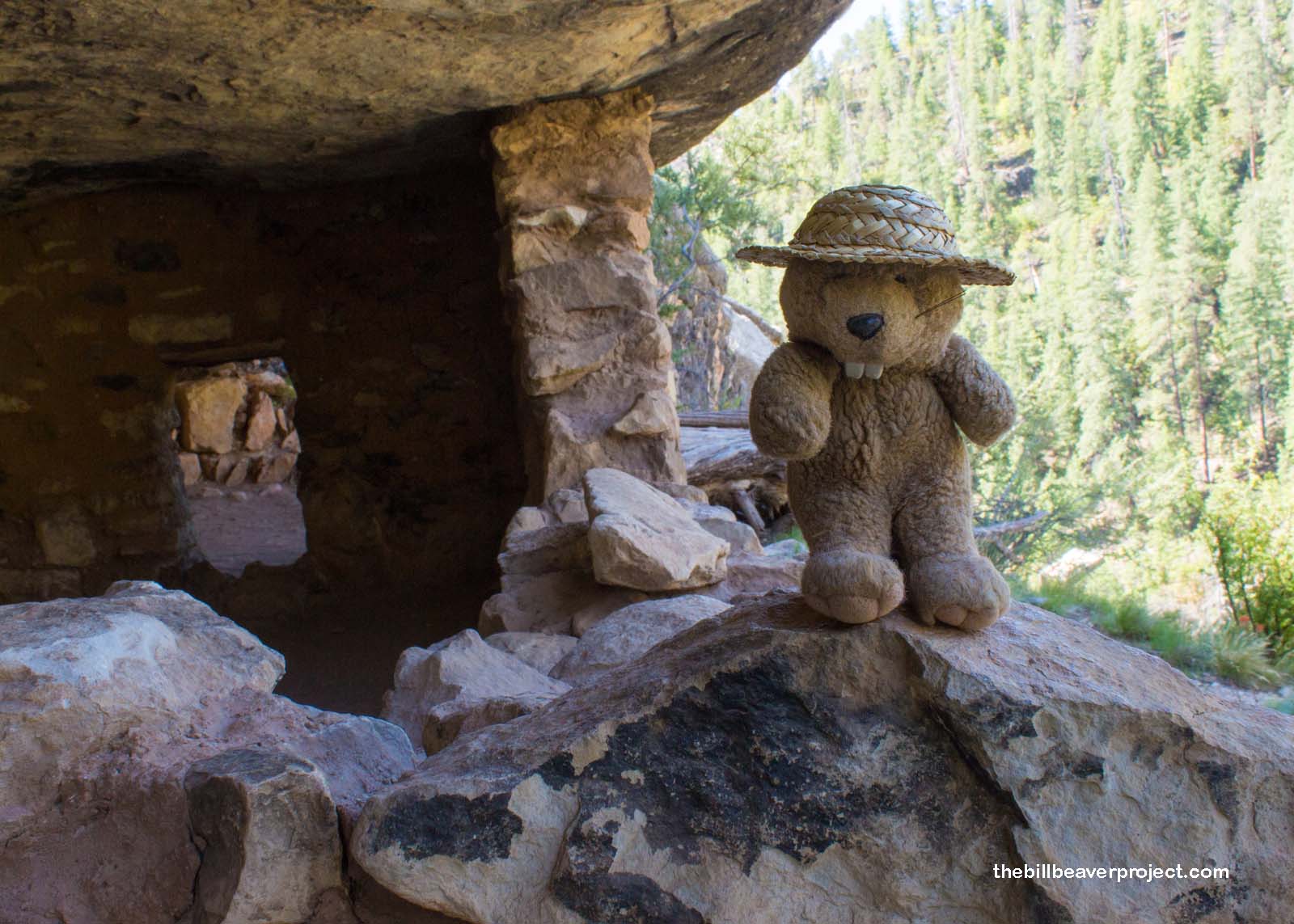 |
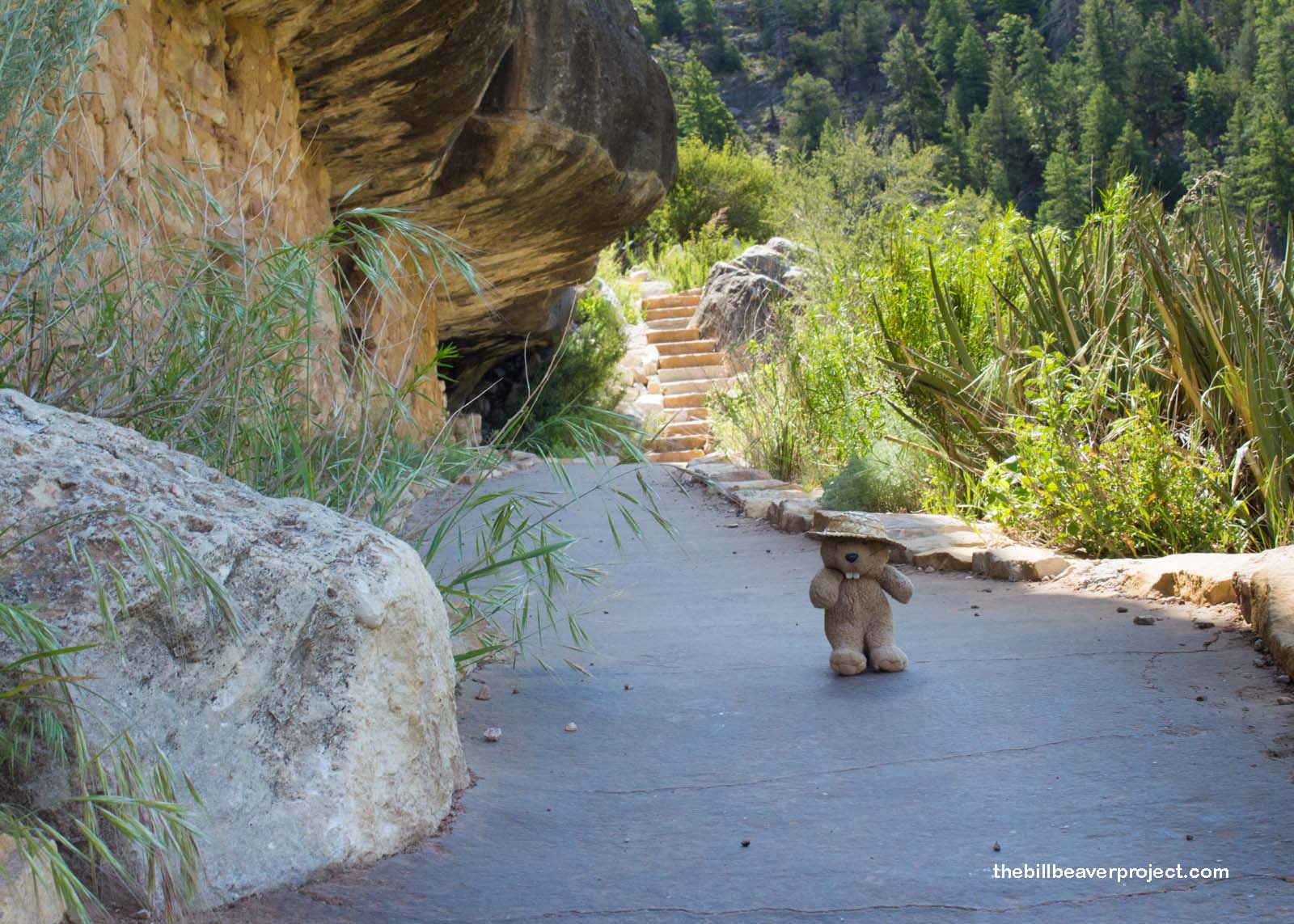 |
Equally mysterious was my next stop: a giant crater in the middle of the desert. In fact, the Winslow Meteor Crater is the first proven, best preserved meteor impact crater in the world!
|
|
It took a lot of years to figure out that this was a meteor impact site! First, in 1891, Grove Karl Gilbert concluded that, since there was no tangible magnetic disruption here, there couldn’t be a huge meteorite buried underground here! No one questioned his conclusion except for Daniel Barringer, who saw mixed strata and meteoric rocks, and figured there must be a giant, mineable meteor buried below! He set out to mine it right away!
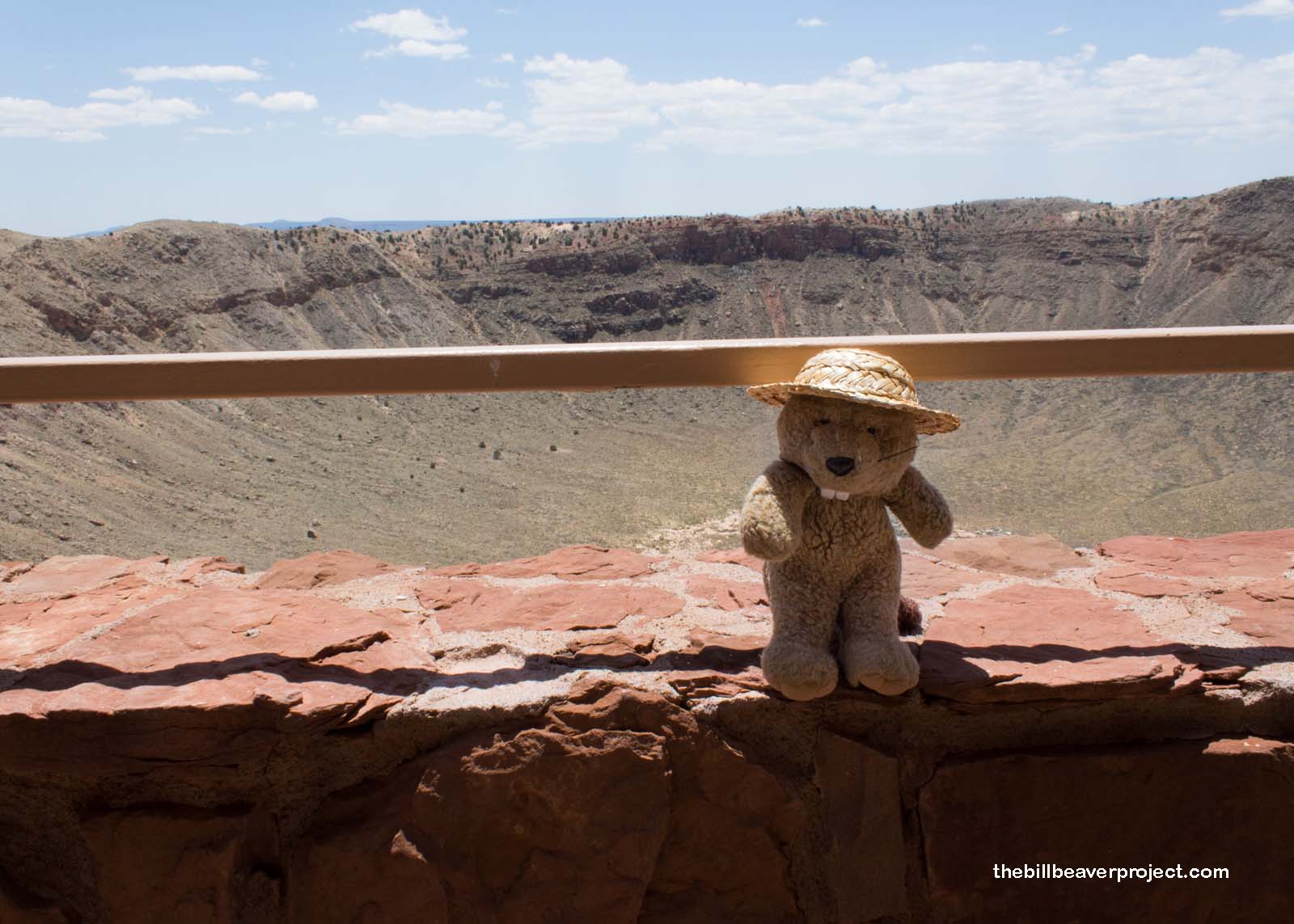 |
Mr. Barringer’s venture was a disaster! Despite all the evidence, there was no giant meteorite to be found here at all! The drilling operation shut down, investors backed out, and poor Mr. Barringer died of a heart attack three months later! So why, after all the excitement, are there no pieces of this meteor larger than the one I sat on in the visitor center?
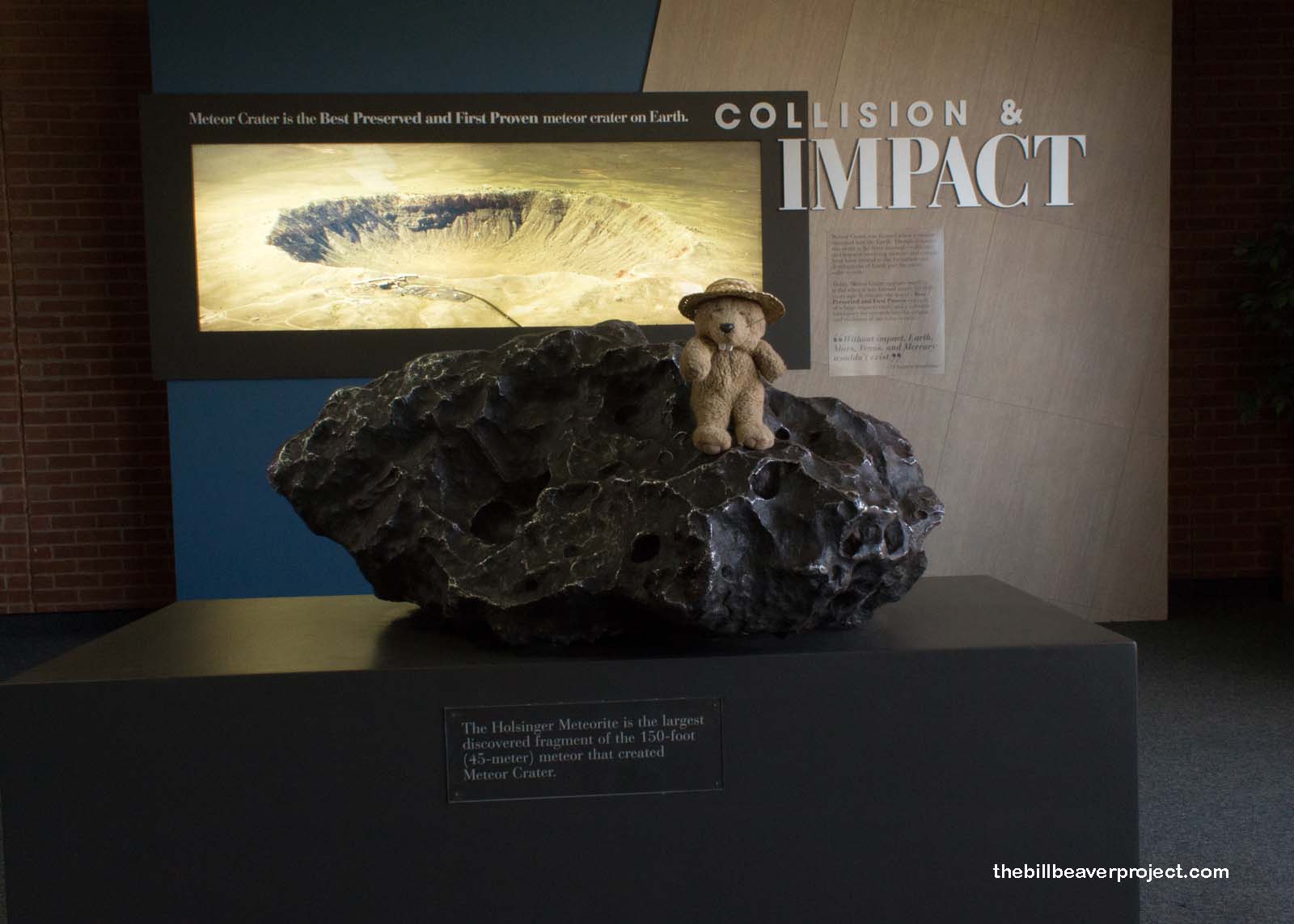 |
To find out, I joined a tour group to walk out along the rim. Even though the whole trek was a quarter mile of flat, paved trail (almost like walking to the mailbox), we were thoroughly warned to stay hydrated and take breaks as needed. Some folks needed them.
The guide explained that a combination of heat from the atmosphere and the sheer force of impact had all but vaporized this 30,000-ton meteor! It had also tossed the rock strata upside down, with the oldest Coconino sandstone at the top of the outer rim, and the youngest Moenkopi Formation scattered two kilometers away from the site!
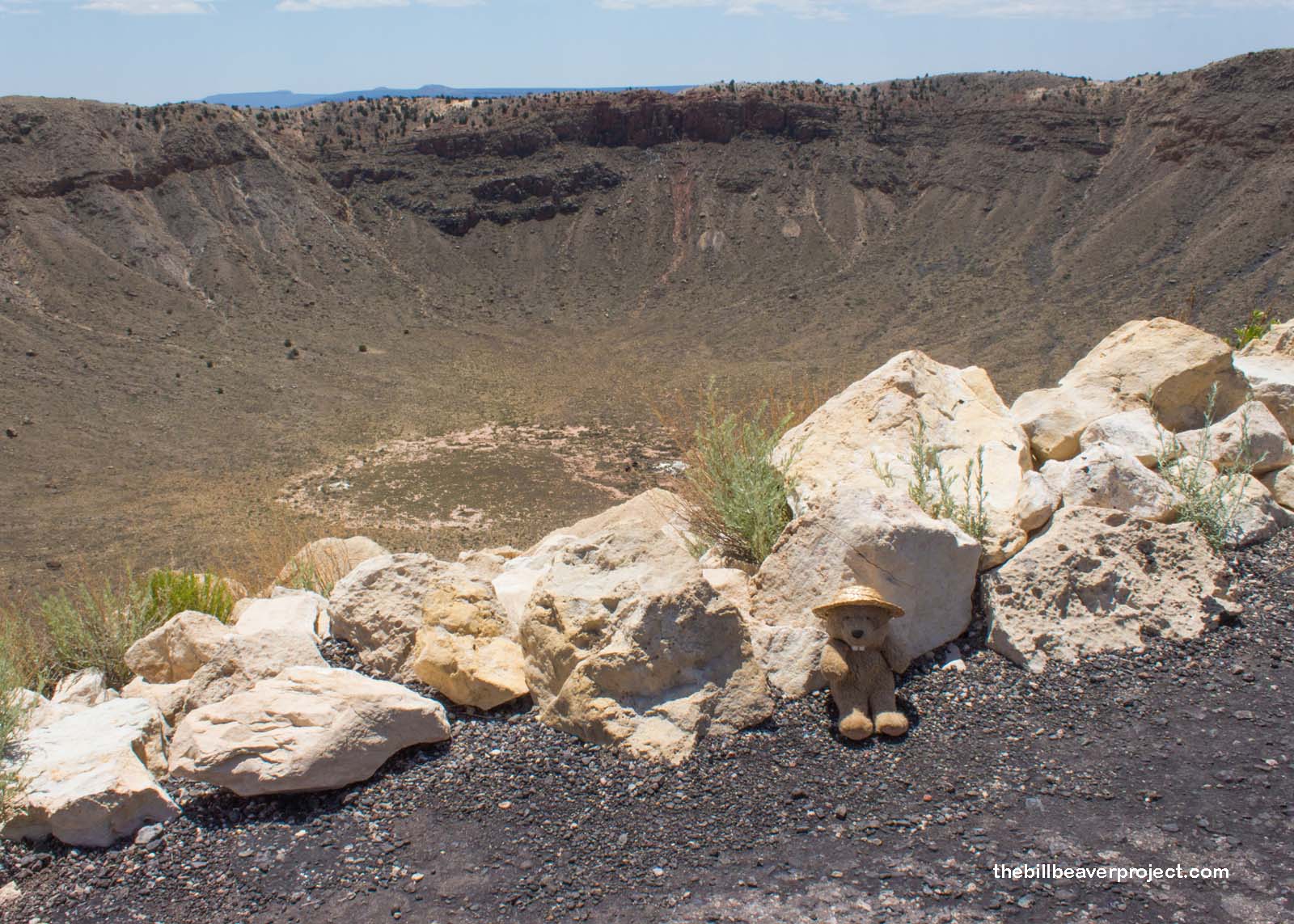 |
But what really saved the day for Mr. Barringer’s reputation was when Eugene Shoemaker found coesite and stishovite at the crater! These rare forms of silica can only form under sudden, intense pressure, like from a nuclear bomb or a meteor impact! They were also found in other craters around the world! Proof positive!
But that wasn’t the last mystery of the afternoon! As the group turned back to the visitor center, I heard some rocks crumbling over the edge and peered over. There was an alien scrambling to climb up over the edge! I gave it a hand and hauled it up, no easy task because its pouch was full of rocks! It had come to Earth from the planet Po-Pohl and had been looking for space metals to get home! It had just enough, so after some thanks and a photo (for proof!), the alien of Po-Pohl warped away!
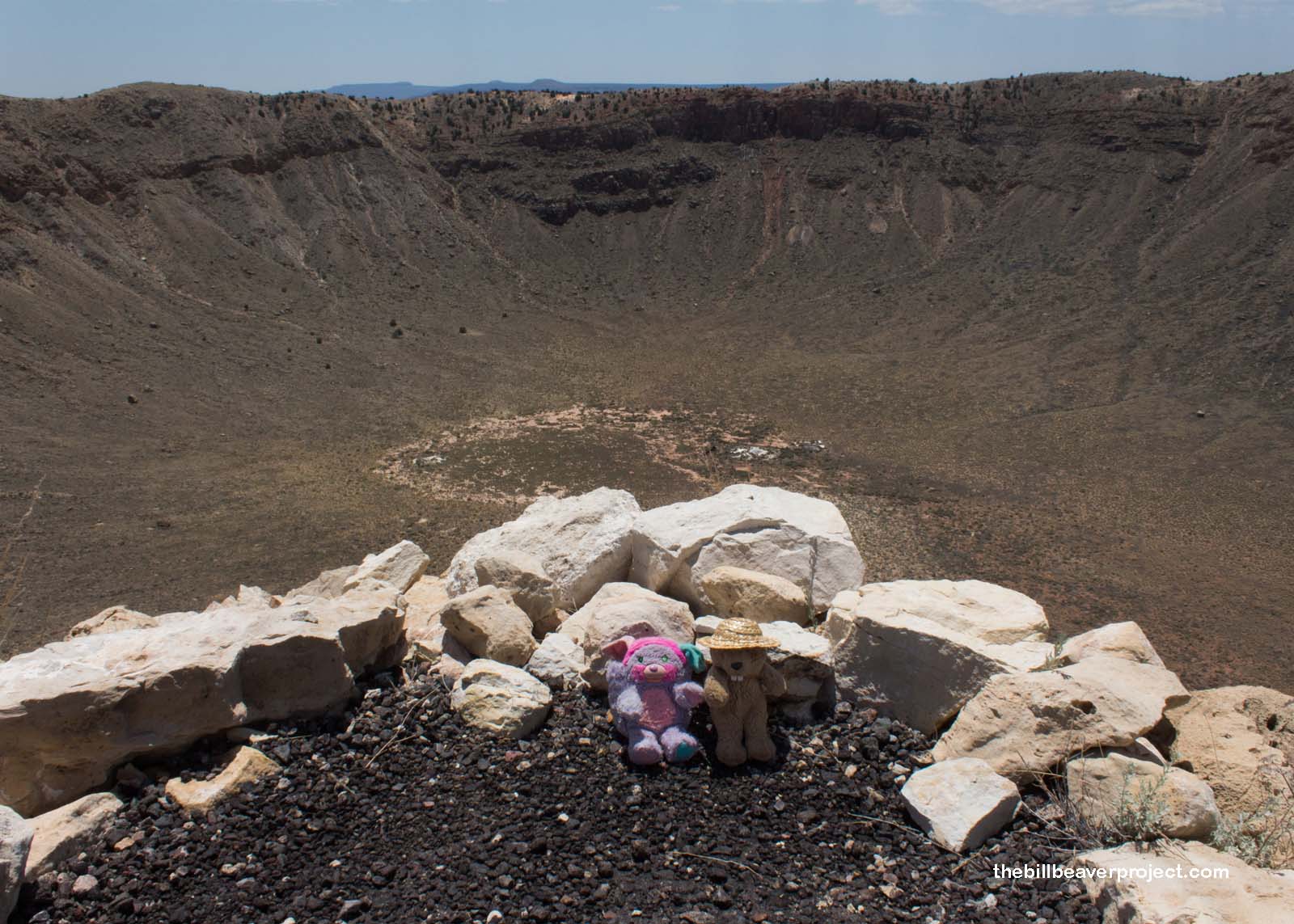 |
By now, I was getting hungry, so I stopped for a bite down the road in Winslow, where a statue of a guitar player reminds visitors that they are standing on a corner in Winslow, Arizona! There’s also a flat-bed Ford parked nearby! The park was set up in 1999 to draw more attention back to downtown Winslow, and sure enough, lots of people, fans of the Eagles and synchronicity alike, were snapping all kinds of photos and buying all kinds of souvenirs! It was a fun, touristy spot that, along with the sandwich, loosened my load for the last leg of the journey!
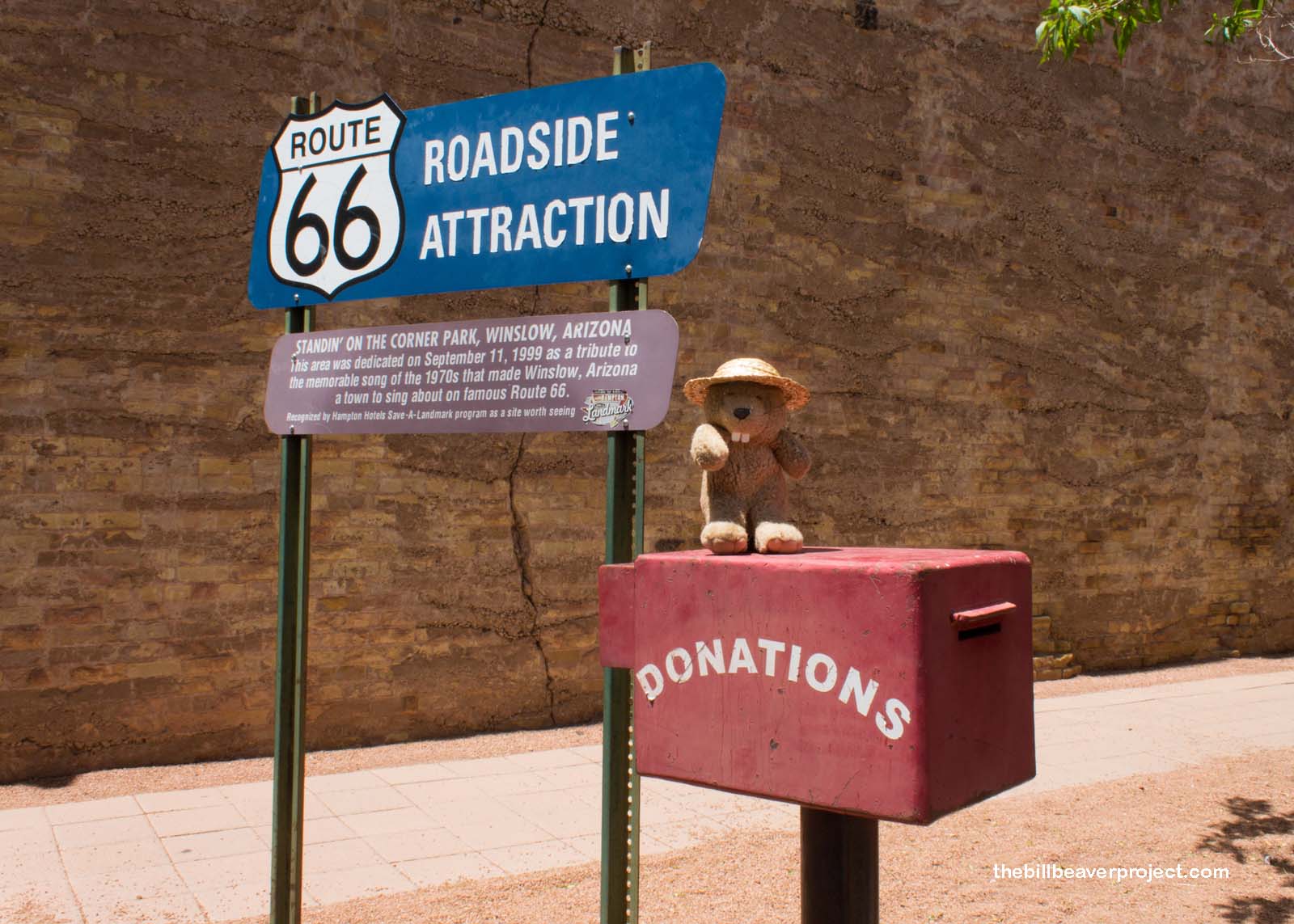 |
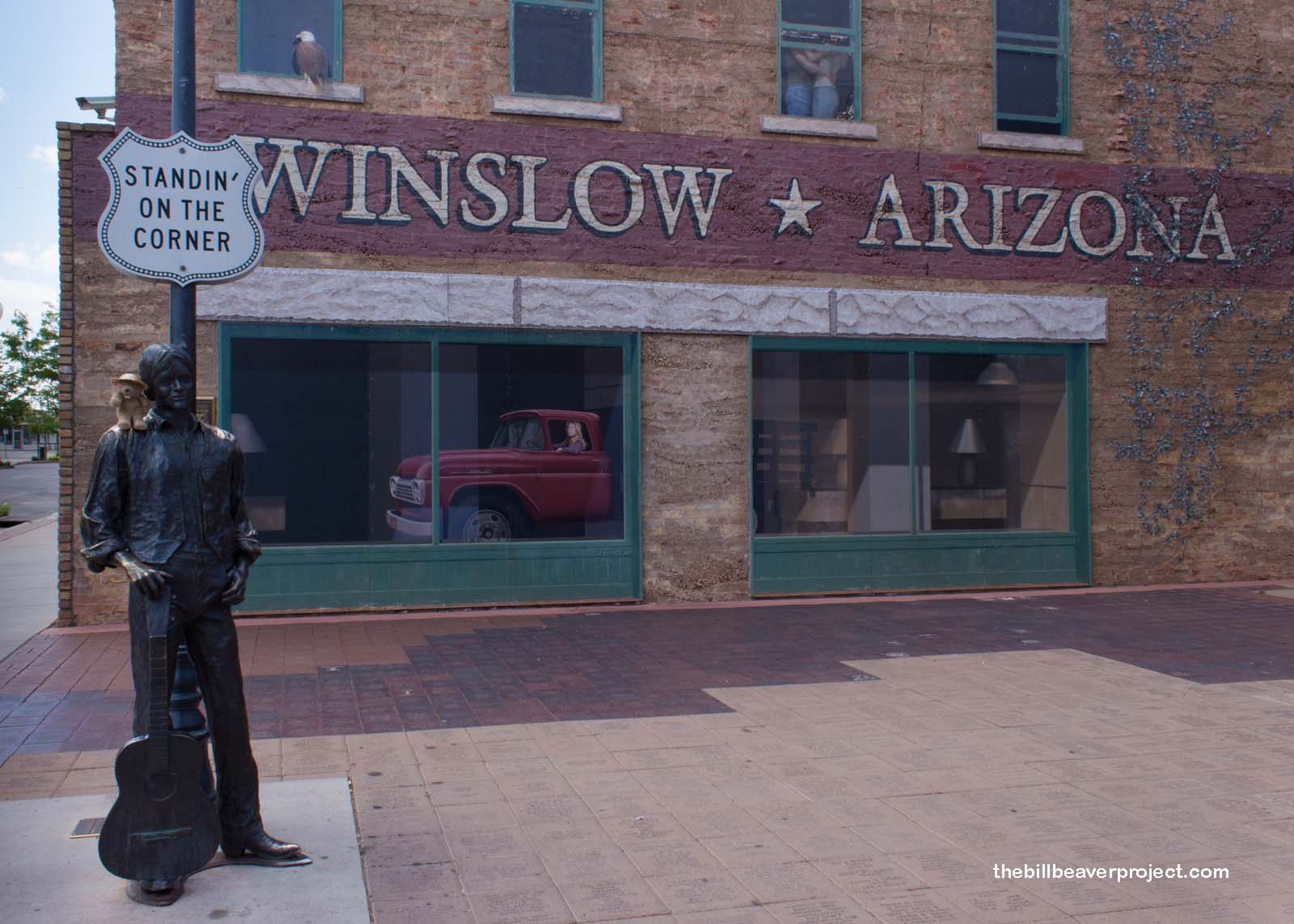 |
Having crossed into Navajo County, I was headed for an ancient rainforest that has become a field of rainbows and crystals: Petrified Forest National Park!
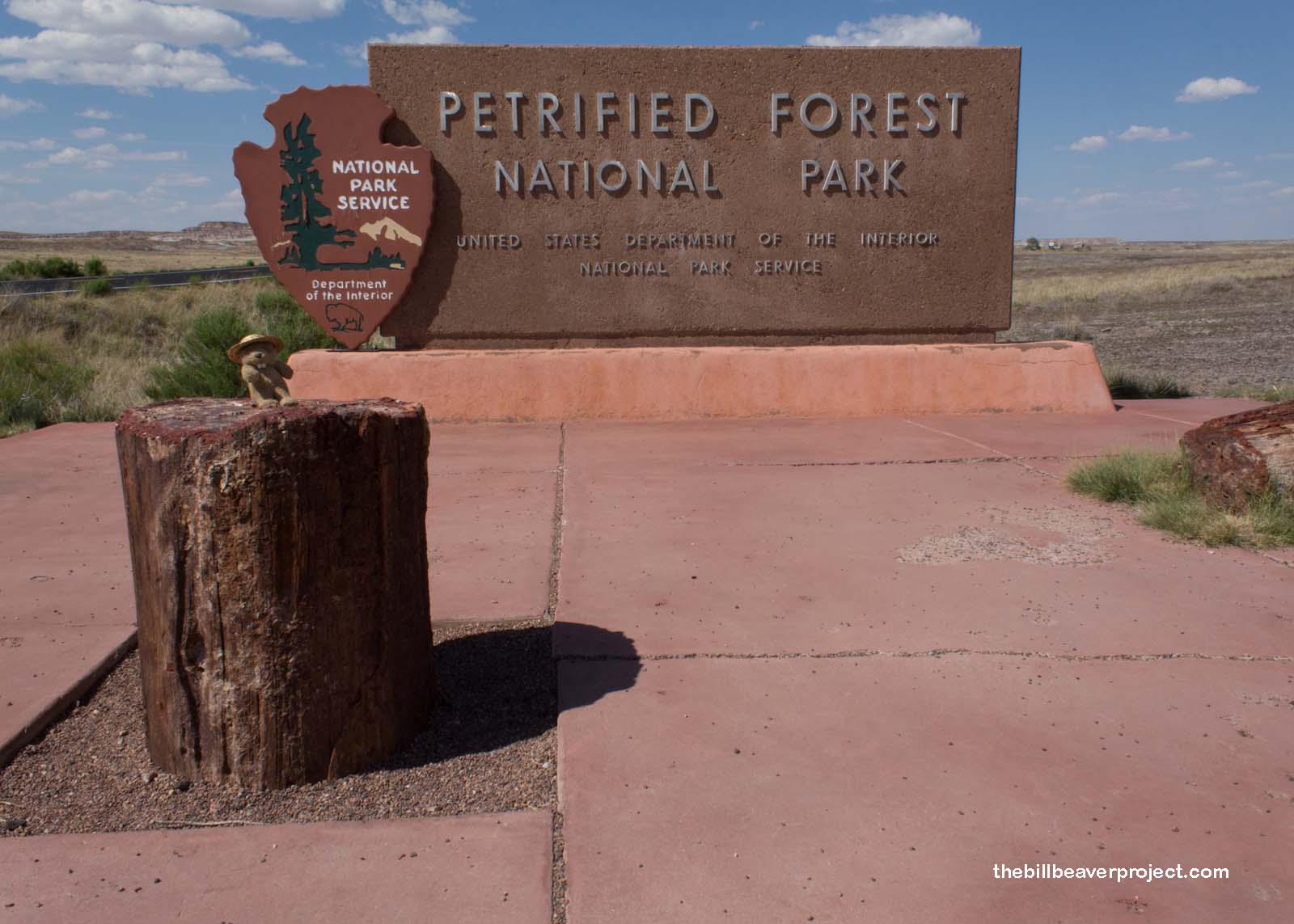 |
As far as the eye can see here, the remains of huge, ancient trees litter the landscape! Most folks go see them at the Rainbow Forest visitor center, but to avoid the Memorial Day crowds, I took an alternate route. No mountains for climbing here, only longer trails! So, I headed down the Long Log Trail, which was really appropriately named! These giant logs can measure up to 141 feet!
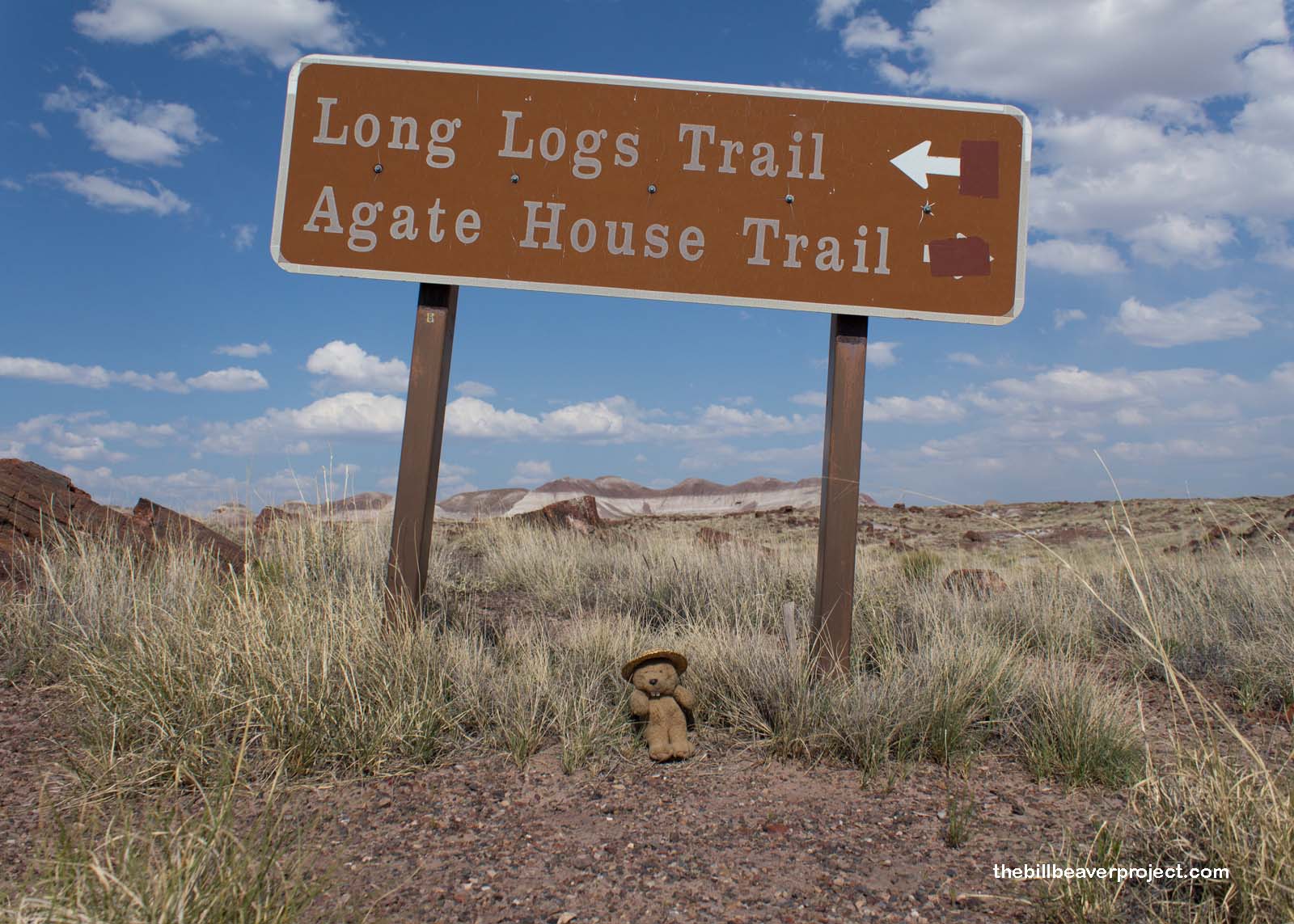 |
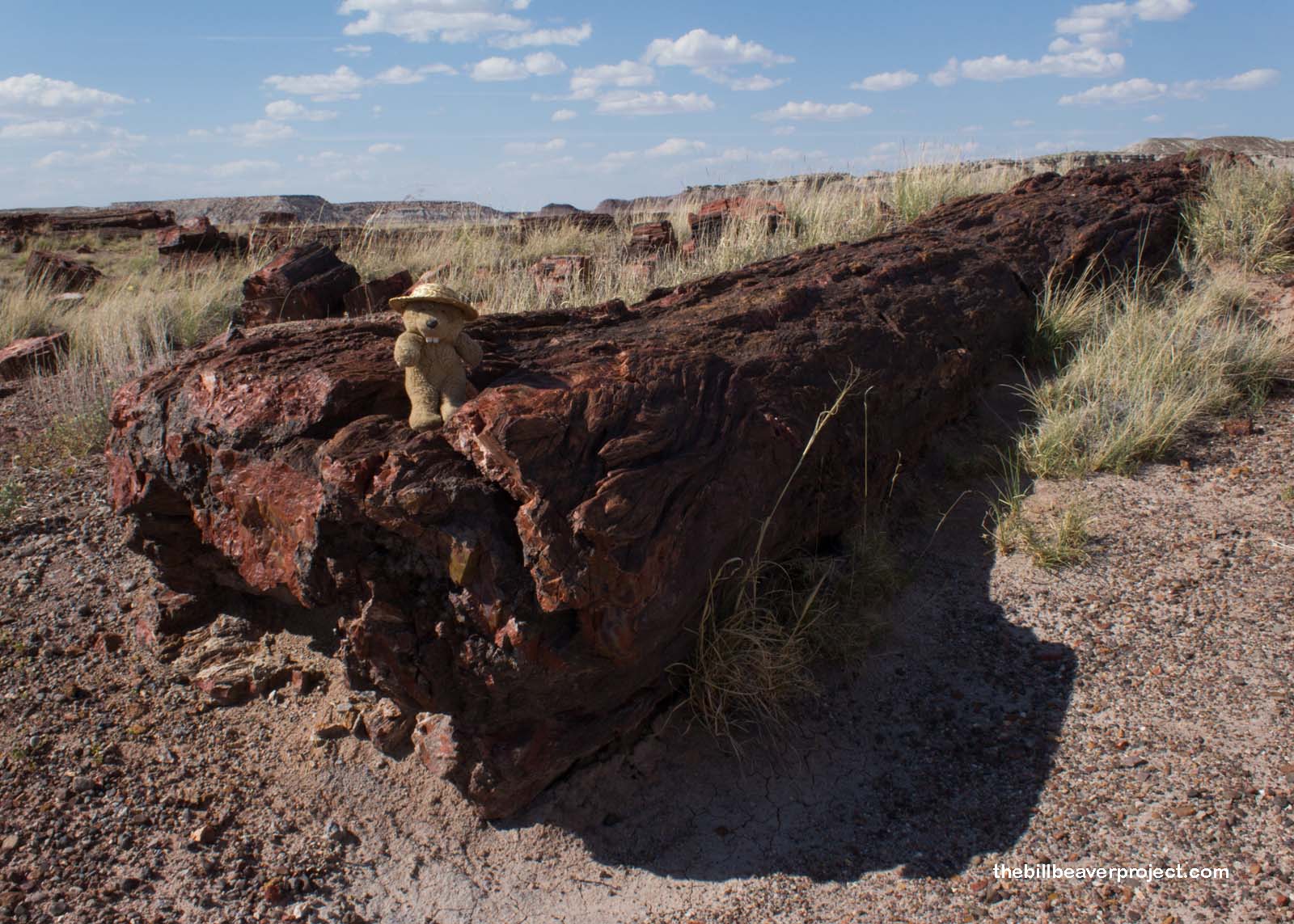 |
No shortage of giant logs here!
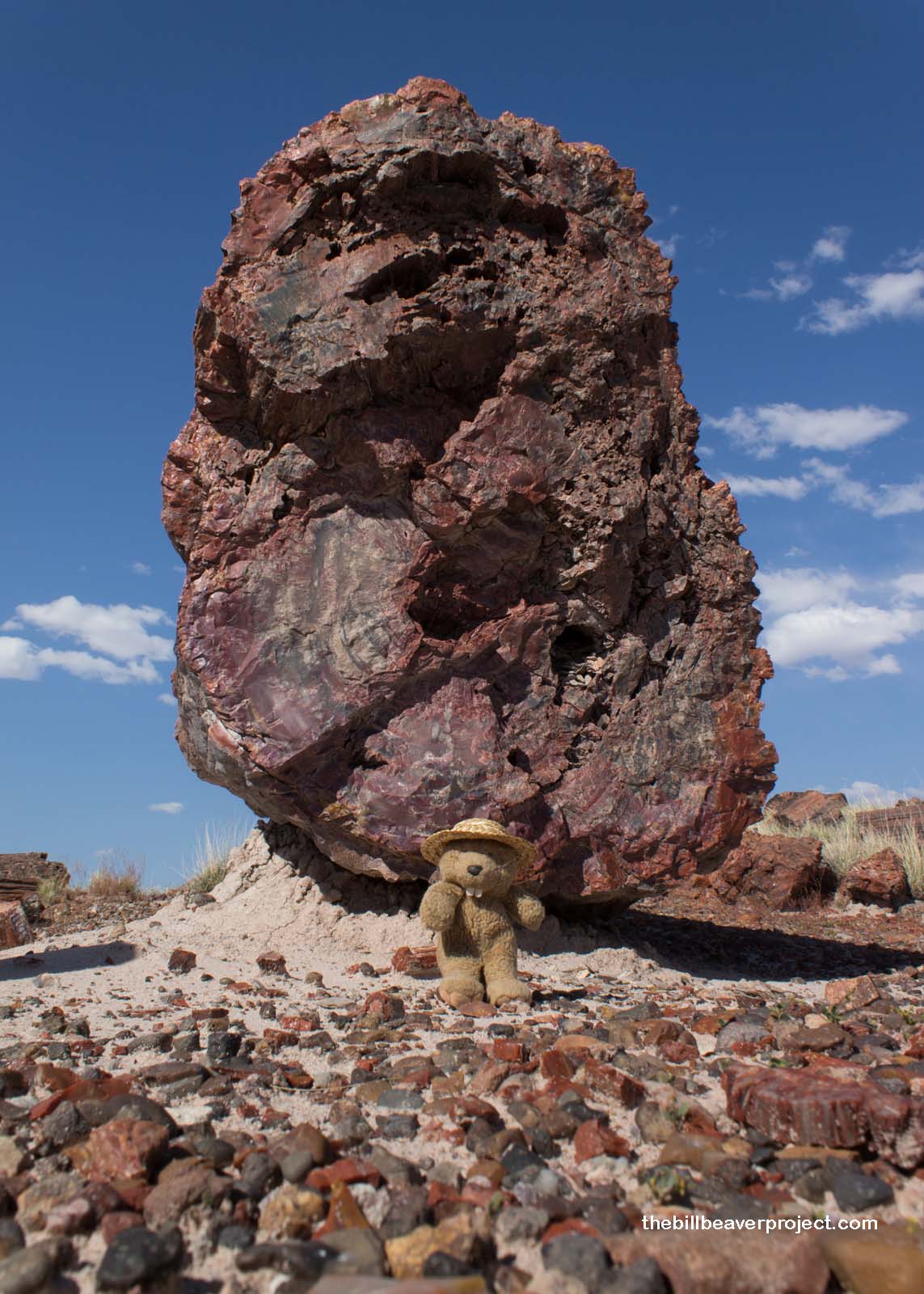 |
These humongous petrified trees are part of the Chinle Formation, 211-218 million years old! Way back in the Triassic, they fell over, and their wood got slowly, slowly, slowly replaced by quartz, amethyst, and all kinds of beautiful, colorful crystals! It was one thing to take in the sheer size of the logs, but another altogether to take in their palette!
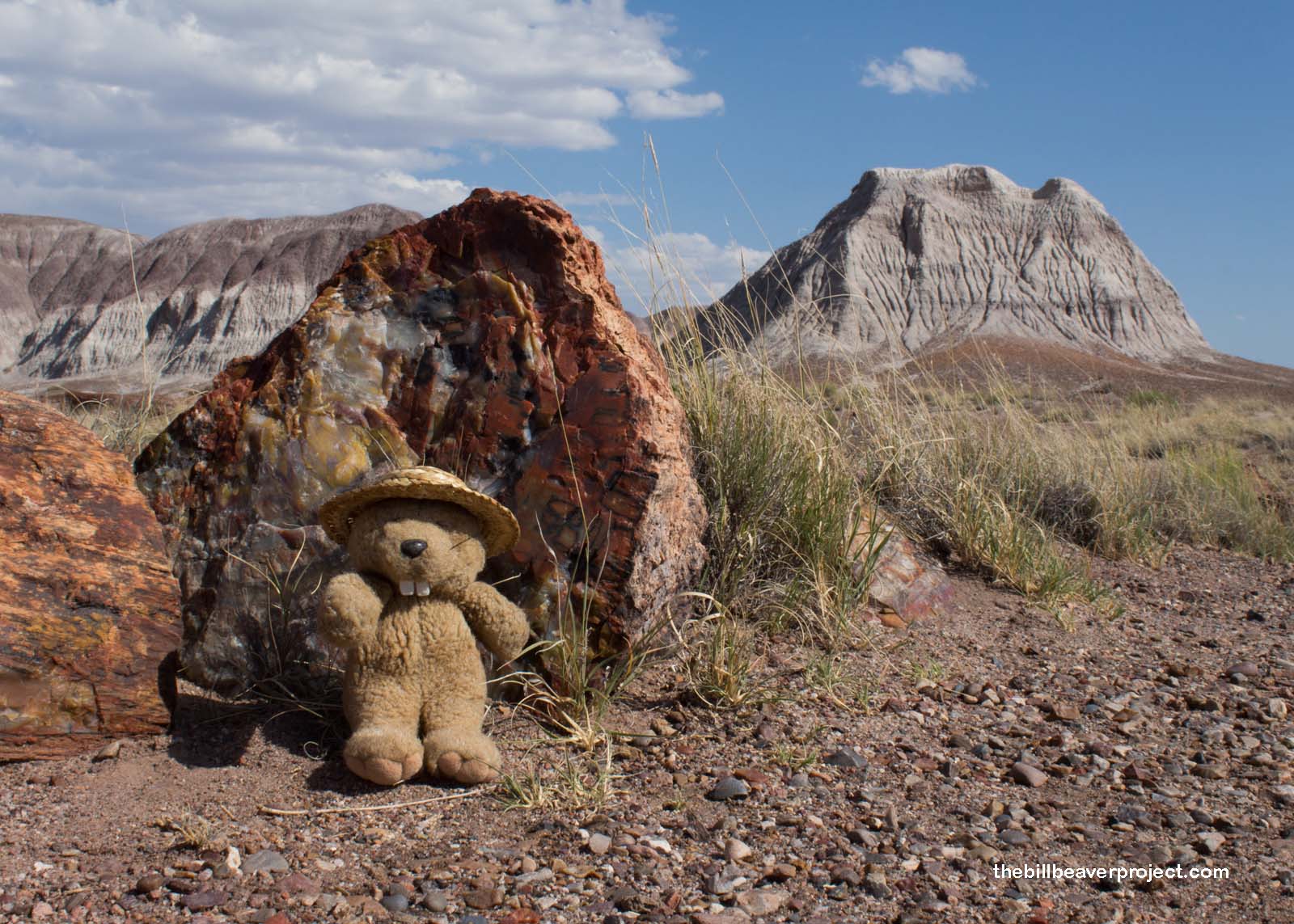 |
Now imagine, if you will, living in an entire house of these rainbow logs! This Agate House at the end of the Long Logs Trail is a reconstruction of a house like the ones Puebloan people built here between 1050 and 1300 AD. For them, living in the Petrified Forest was like living in a giant toolbox, because they could make hunting and building tools from the hard fossils, then build sturdy houses from the dense stone!
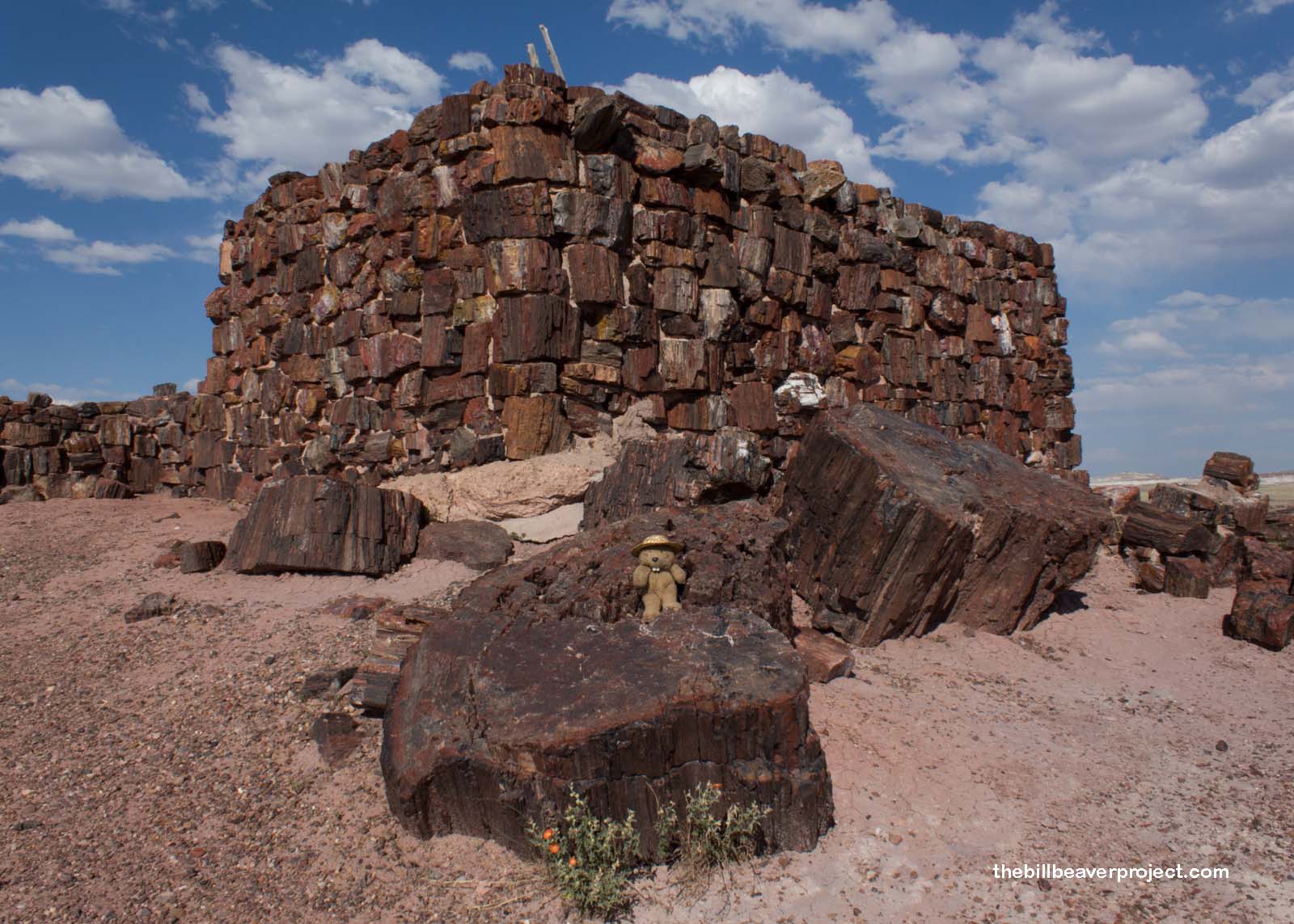 |
My next stop on my tour of the Petrified Forest was the Crystal Forest! I thought that meant I was going to see whole trees made of clear quartz, but what that really meant was that there were lovely crystals tucked inside the trunks of the trees lining this short, meandering trail.
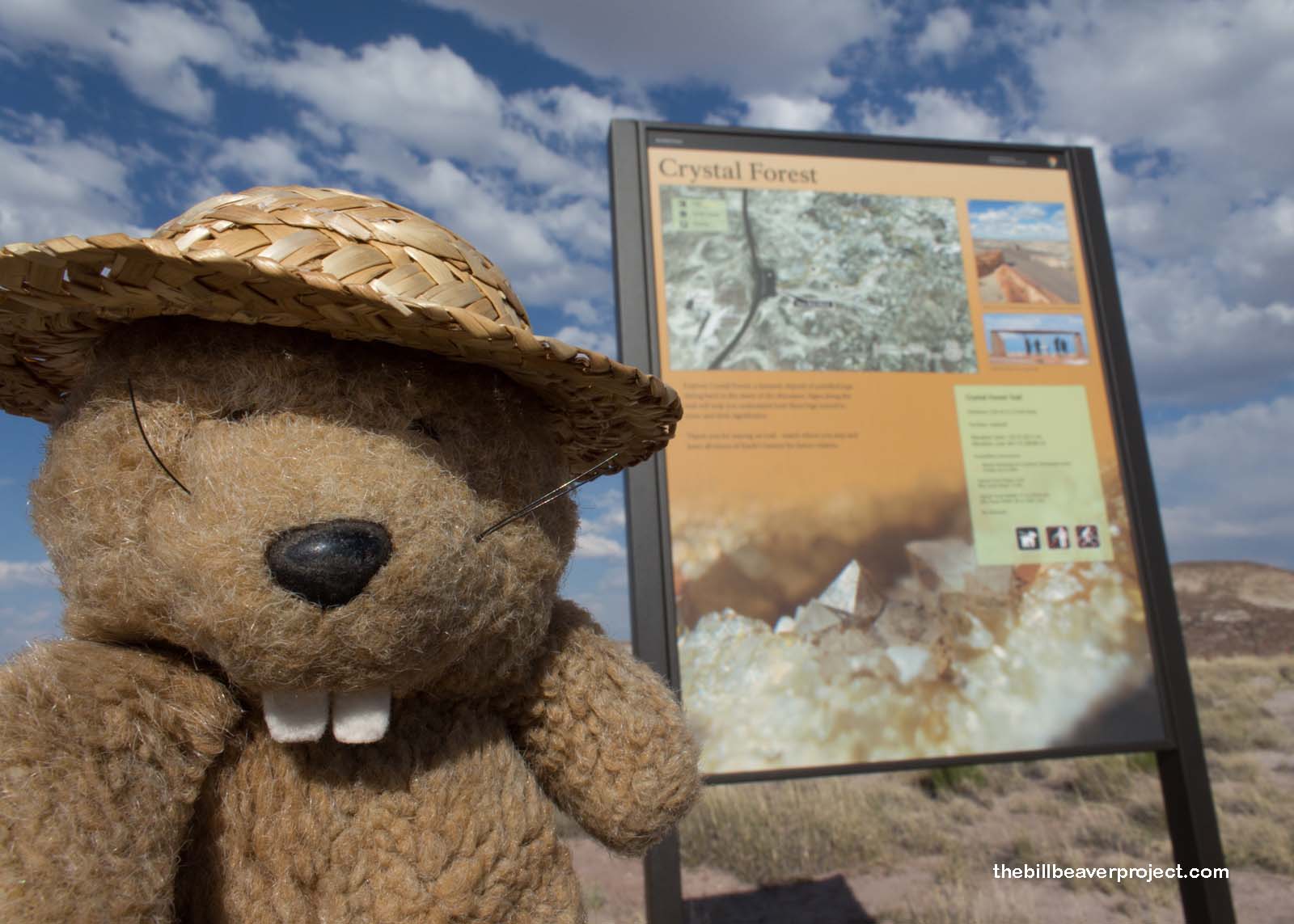 |
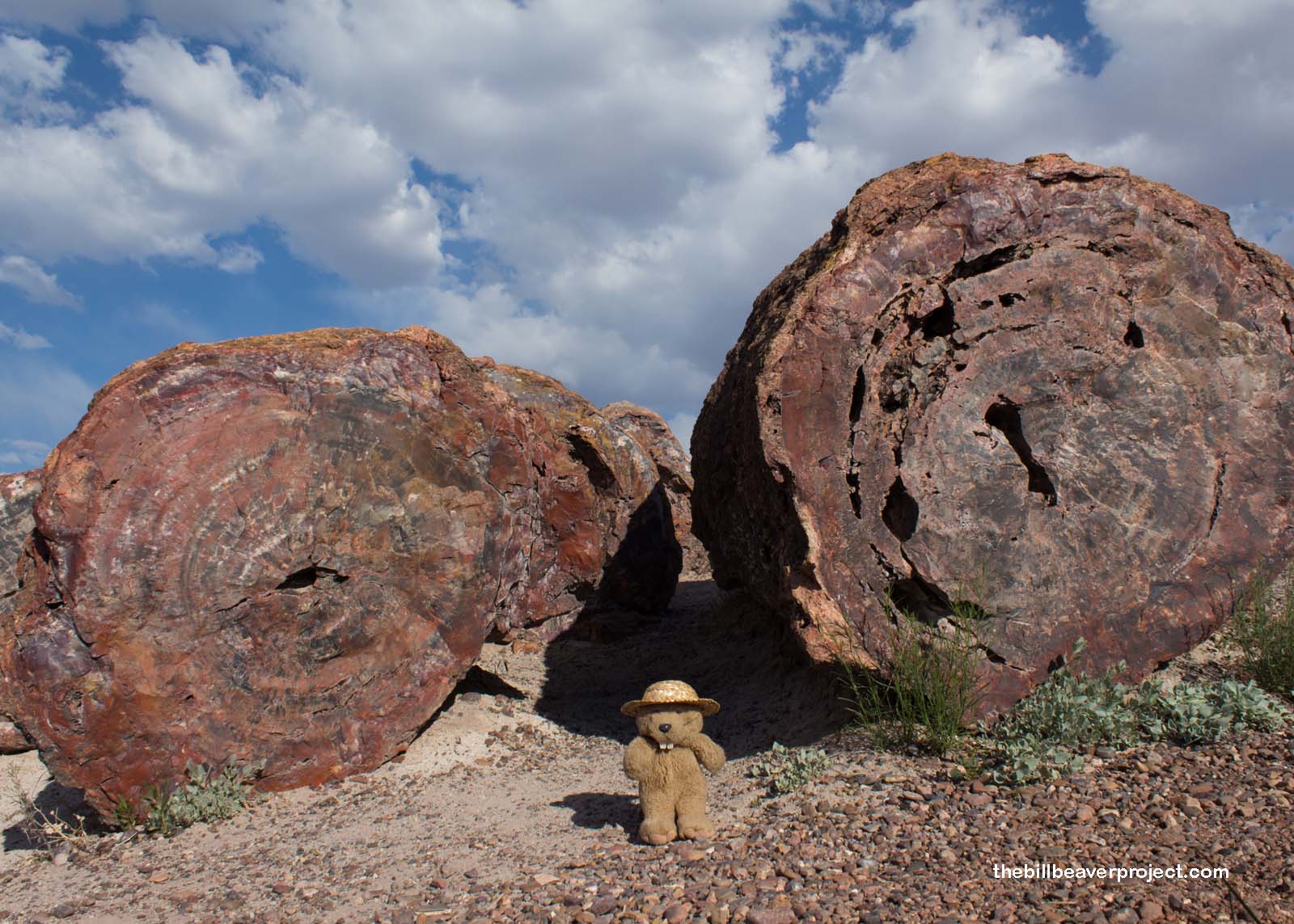 |
See? Look at those colors!
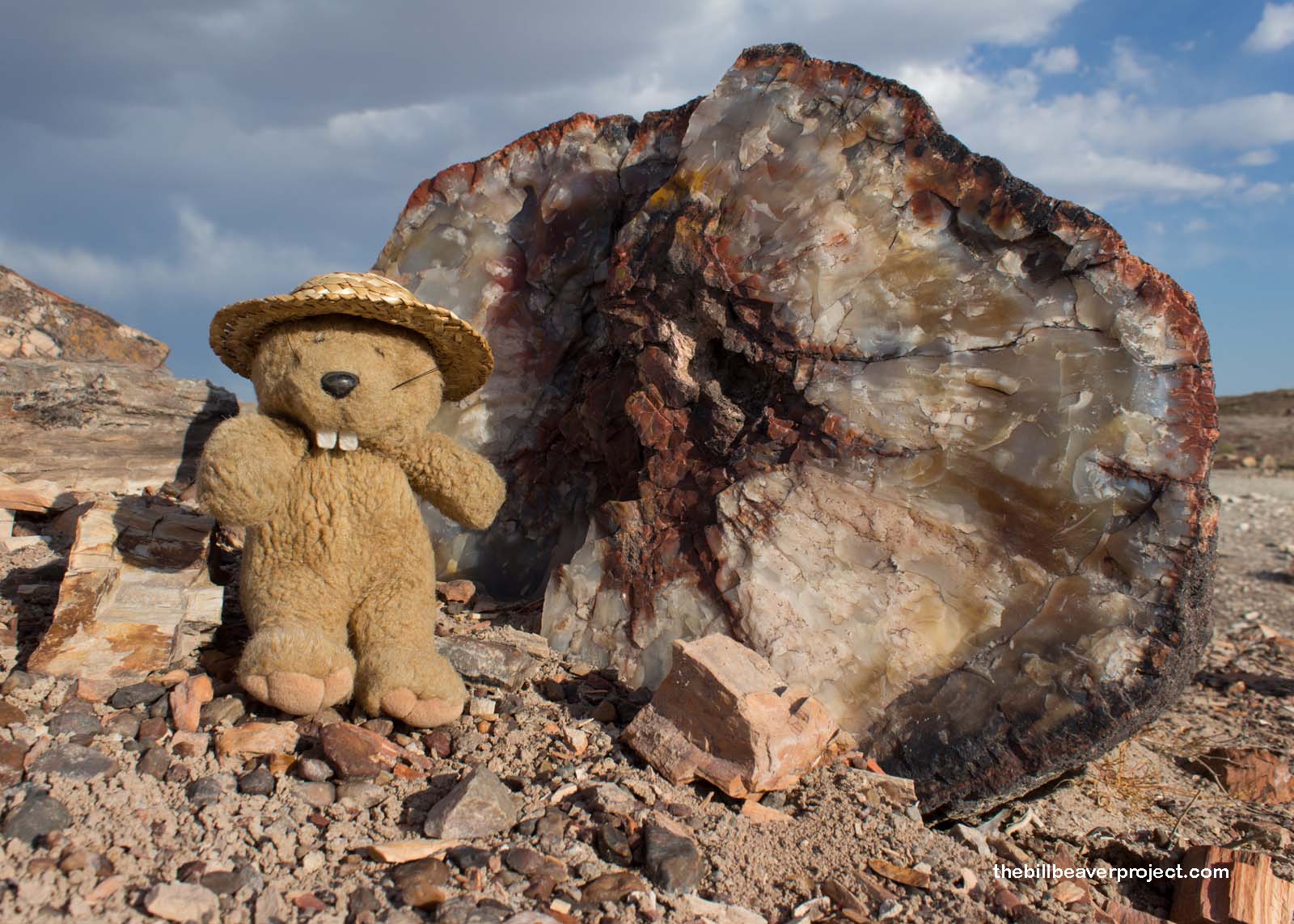 |
The day was wearing on, and I was worried about getting back to Flagstaff in time to check in to my AirBNB. So, I had to skip the Jasper Forest and go straight to the Agate Bridge! The bridge is actually a giant petrified log spanning a gully! Water flow has eroded out all the dirt from beneath it, so now it’s suspended in air! There’s cement holding it up for now, but one day, it too will wash away!
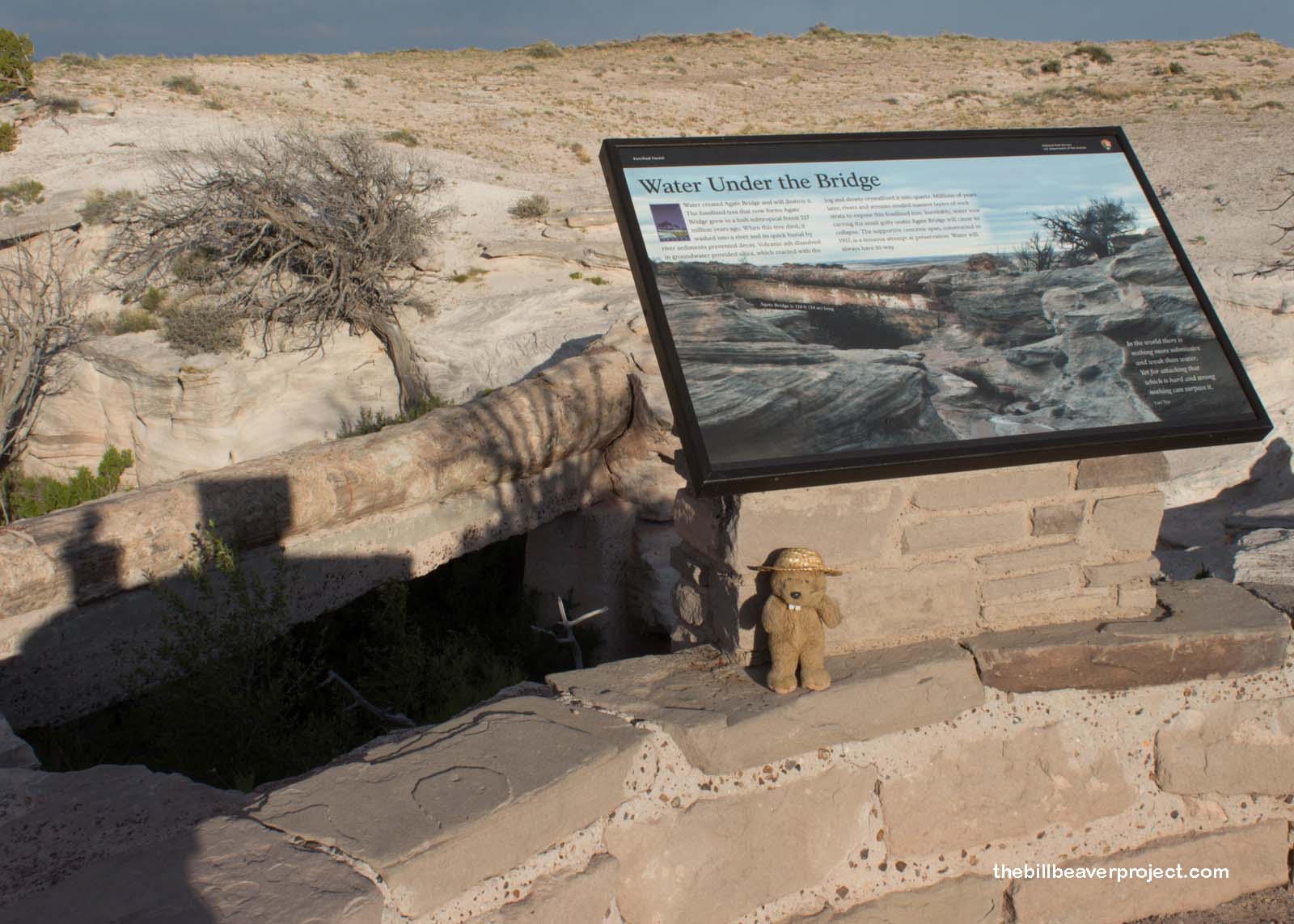 |
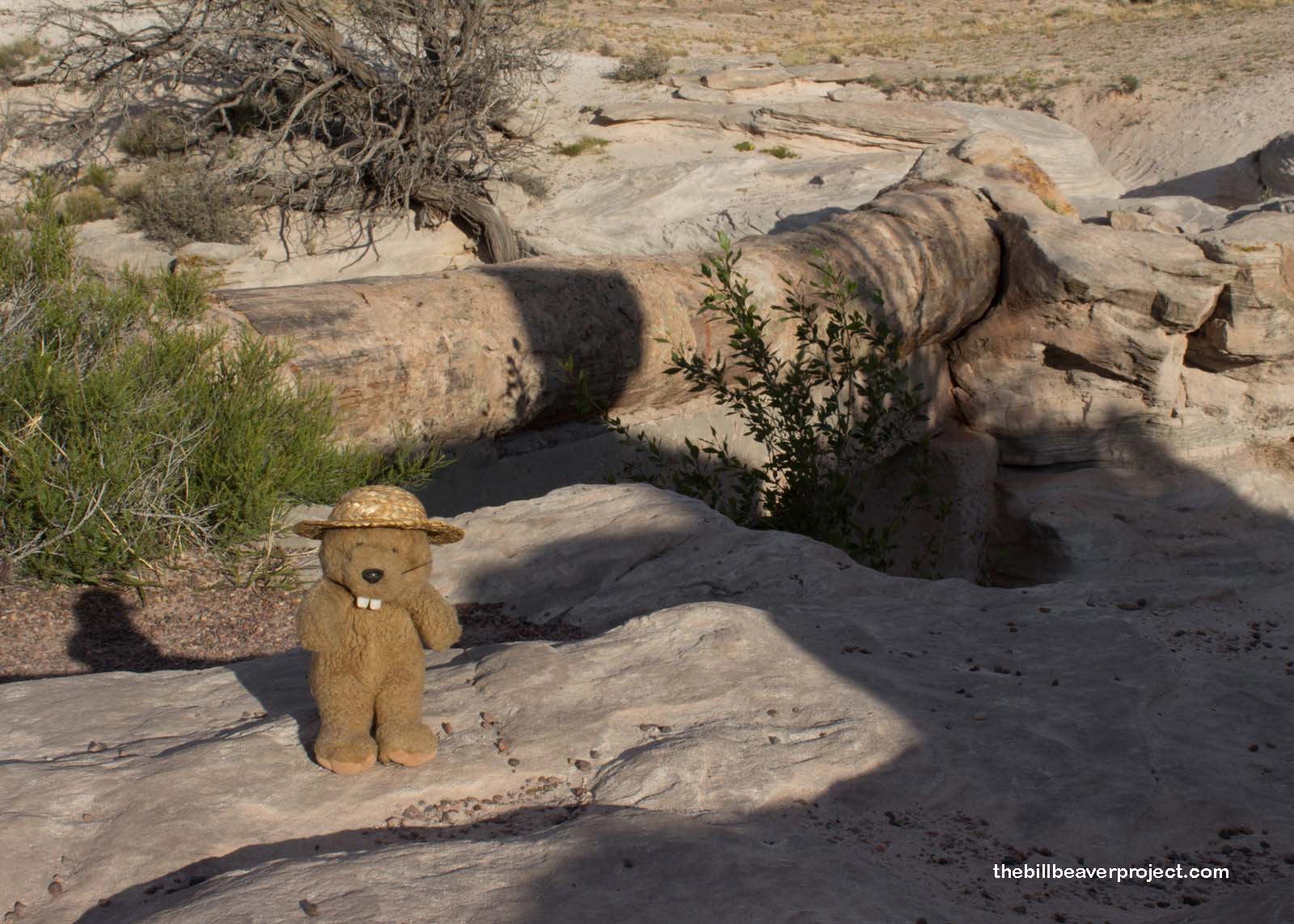 |
I crossed the freeway, where there was a neat exhibit on Old Route 66, complete with an original 1932 Studebaker! Petrified Forest National Park is the only national park in the country with part of old Route 66 running through it! This stretch, in heavy use from 1926 until 1958, was once lined with signs calling tourists to explore (and spend) with gift shops, view towers, and a zoo!
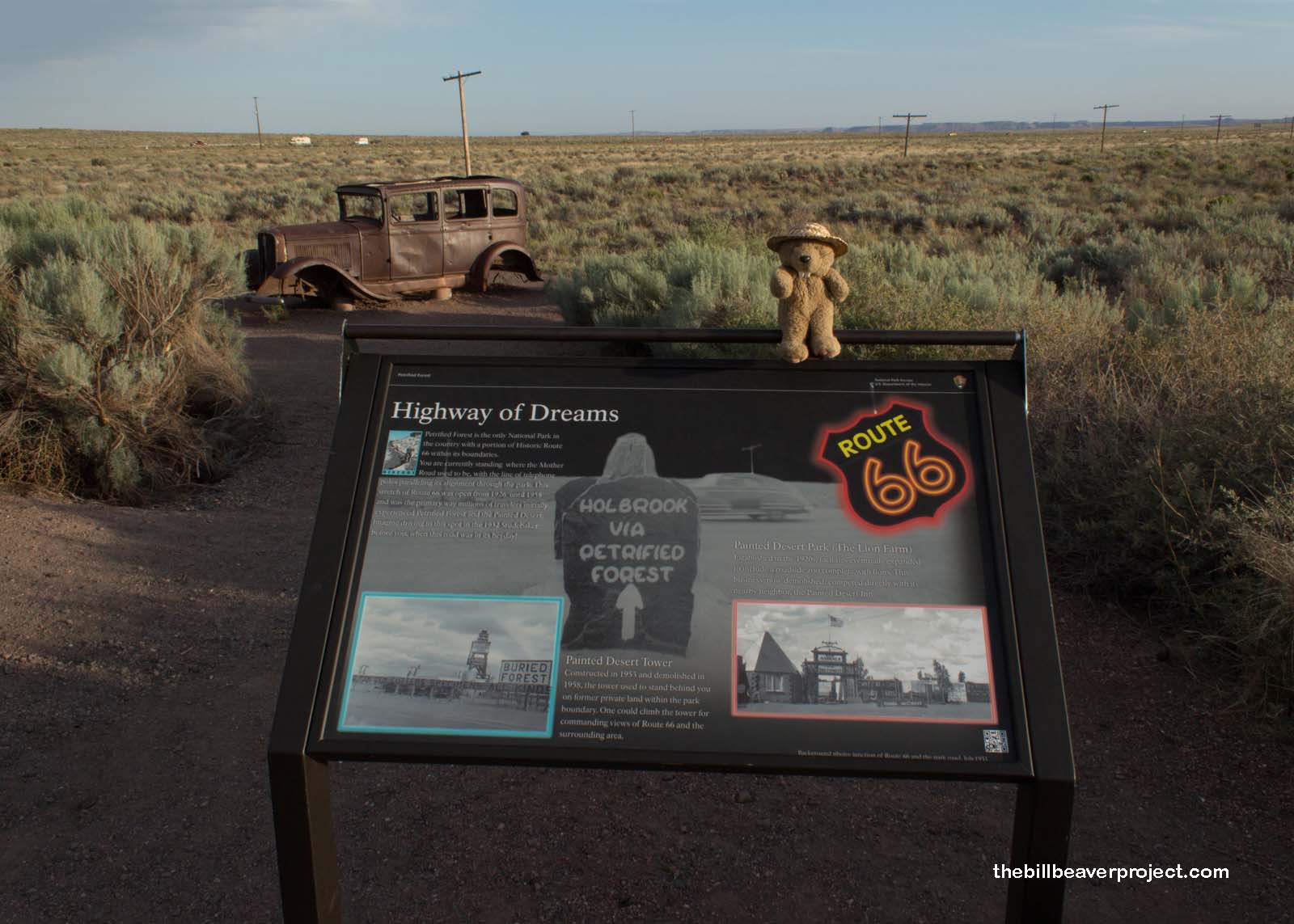 |
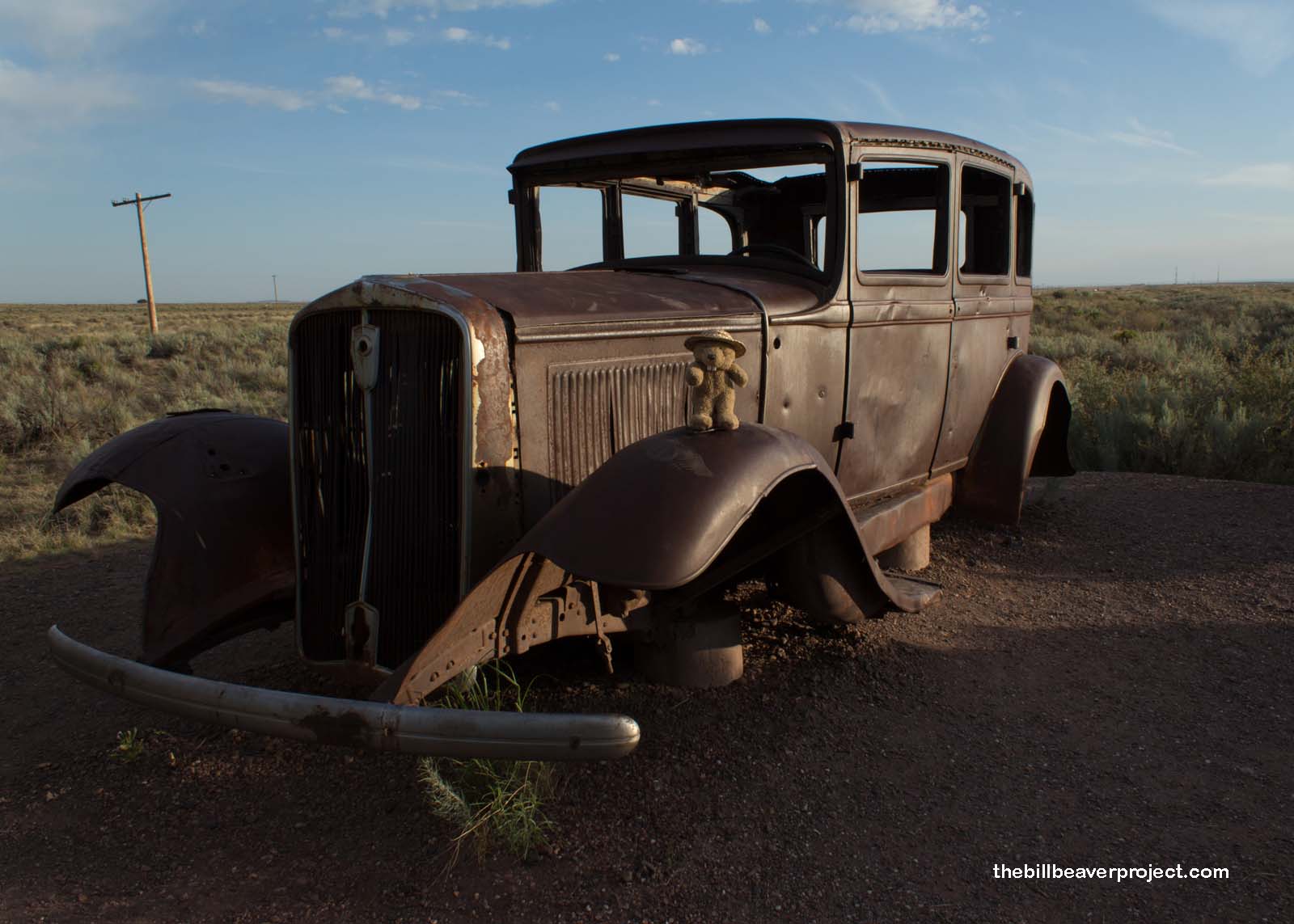 |
Folks who came this way on Route 66 had the chance to stay at the Painted Desert Inn, once made entirely out of petrified wood! The National Park Service bought and renovated it, starting in 1935, turning it into an adobe building under the supervision of travel hospitality guru, Fred Harvey! The inn served guests from 1940 to 1942 when the World War II efforts abroad took funding away from projects at home.
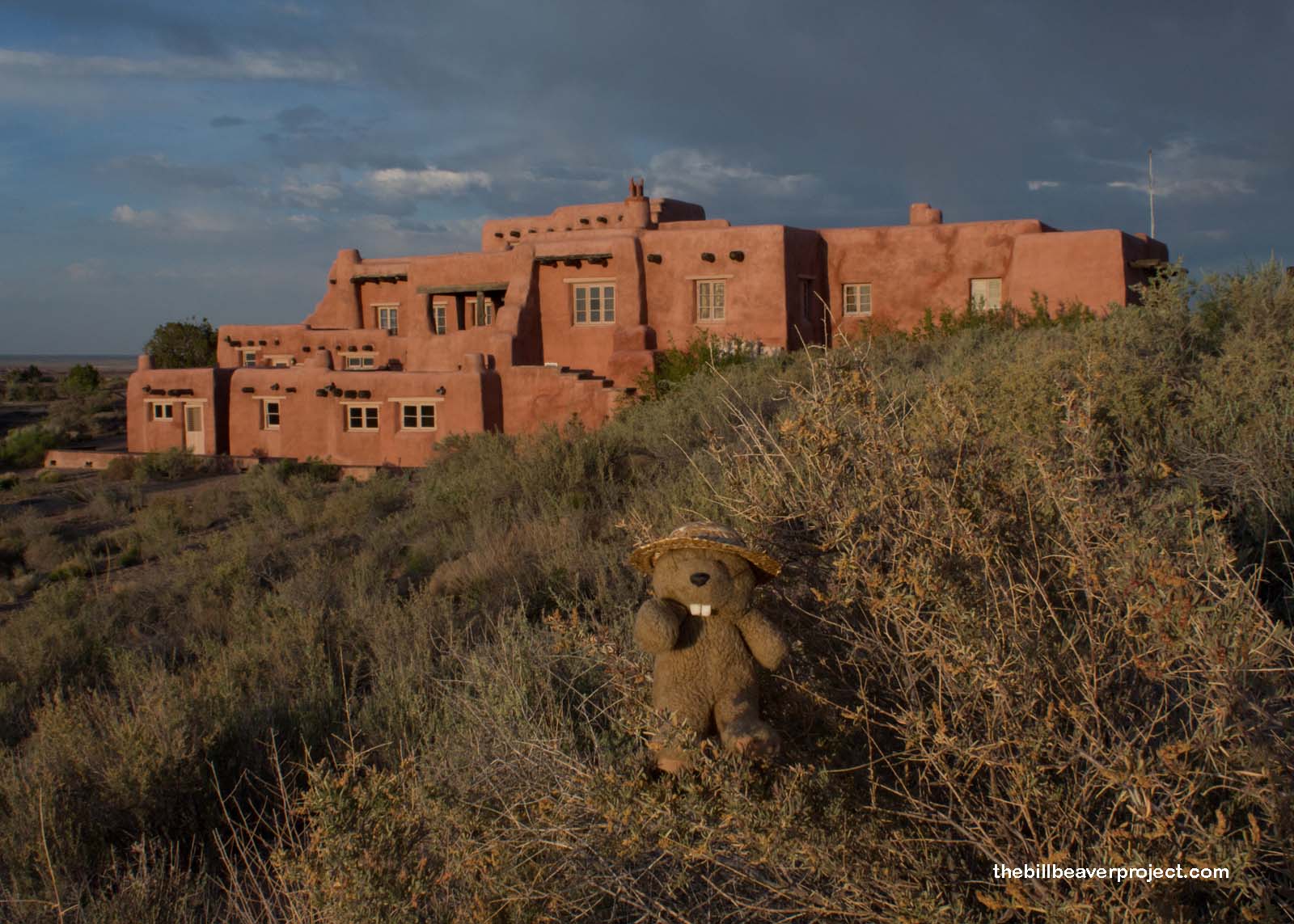 |
This would have been an incredible place to stay, if only for the views of the Painted Desert from Kachina Point! Called “Painted” for obvious reasons, the incredible colors of the desert here are caused by many cycles of volcanic fire and water from seas and floods, leaving behind layers of bentonite clay and sandstone! It’s really an exquisite piece by the supreme art master herself, Mama Nature!
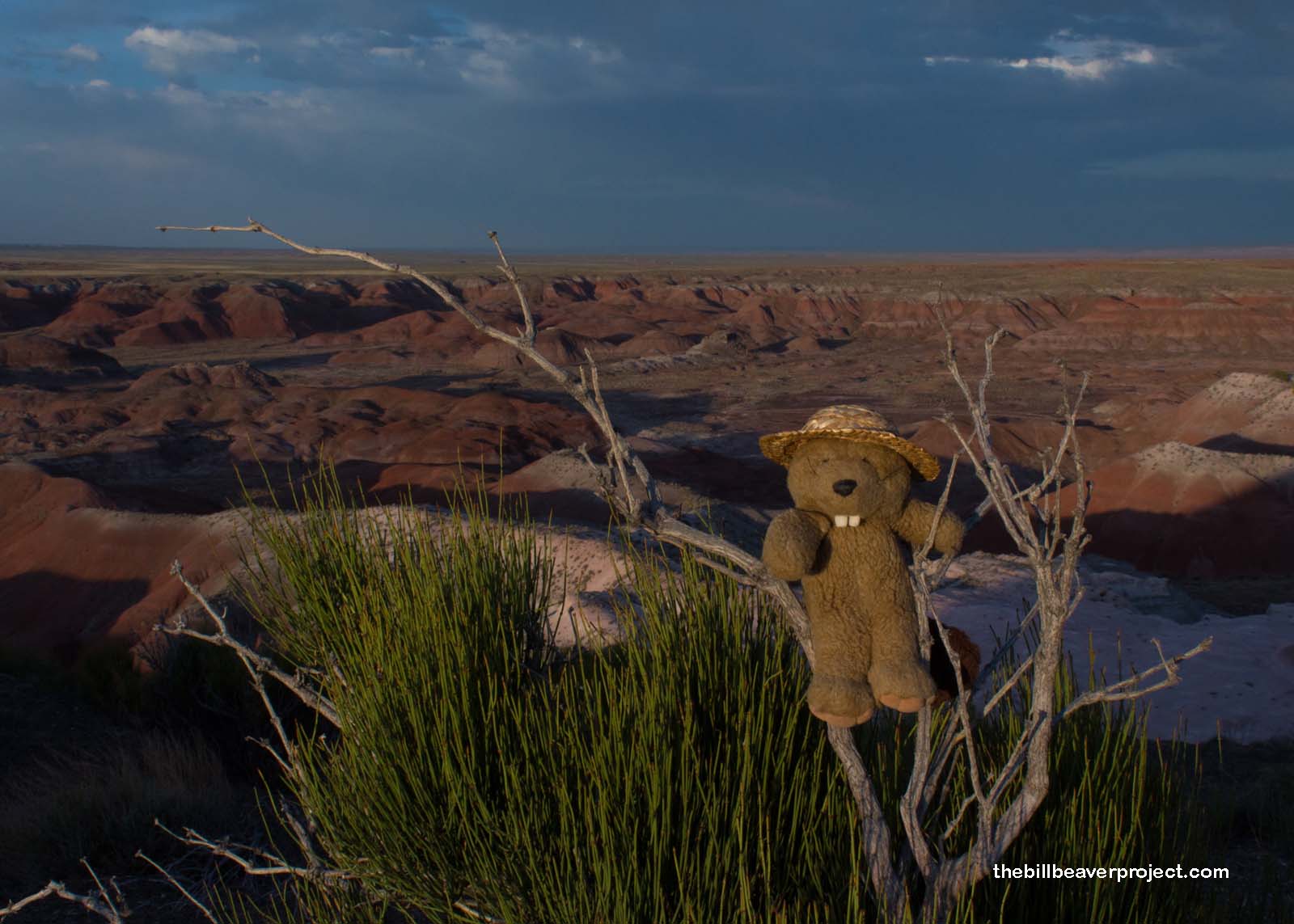 |
The sun was beginning to set, and I didn’t want to get trapped on the road in the dark after such a long and adventurous day, so I took a good last look at the beauty of the painted desert and headed west for some rest! Tomorrow, the Grand Canyon!
Take it easy!

 More 2016 Adventures |
Total Ground Covered: 283.0 mi (455.4 km) |
 Next Day |
